



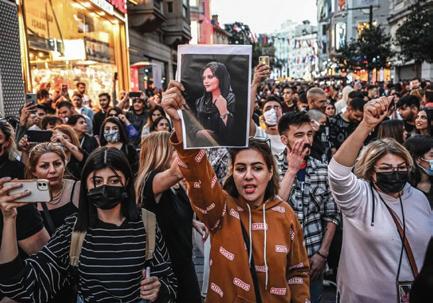

www.majalla.com Issue 1923- September- 23/09/2022 2 AWeeklyPoliticalNewsMagazine www.majalla.com Issue 1923- September- 23/09/2022 Erling Haaland: Record Breaker and Master of Hat TricksA Weekly Political News Magazine Grief Proves to Be Itself the Medicine Iranian Women Abused by Morality Police The Unseen Libya
Four billion people are estimated to have watched the funeral of Queen Elizabeth II earlier this week - more than half the world’s entire population – showing how monumental this lady was to the world. Luisa Markides writes about the ten-day national mourning in the UK, the State funeral attended by world leaders, the heartfelt scenes of people standing in respect at the procession of the coffin passing through London, and the Royal Family’s dealing with the loss of their beloved monarch.
Protests are raging in Iran over the death of Mahsa Amini after she was reportedly beaten by the Morality Police for not properly wearing the veil. Exploring the implications and consequences of the incident, Ahmed Taher focuses on two main issues: the Morality Police as a tool employed by the mullahs’ regime to curb freedoms and suffocate people, and also the suffering of Iranian women under such a regime. Taher also highlights “the feeble international reaction” to the brutal event and the resulting public outcry, as Western countries resume their negotiations with Tehran over the nuclear deal.
Last week, Syrian workers in Turkey called off their planned strike over bad working conditions and lack of legal rights, permits and compensations. Jiwan Soz discusses the reasons why the strike was cancelled, while highlighting the suffering of these workers who are concerned over Turkey’s declared intentions to deport Syrian refugees to their home country.
Little is known about Libya’s rich historical and natural sites of interest. This prompted a Libyan professional photographer to form a team of adventurers to explore their country and capture the best shots to promote tourism. Amany M. Salem interviews the Libyan Sanad Ahlafi who travels with his team throughout the North African country to show the world its unseen face.
Read these articles and more on our website eng.majalla. com. As always, we welcome and value our readers’ feedback and we invite you to take the opportunity to leave your comments on our website.
A Weekly Political News Magazine www.majalla.com/eng
HH Saudi Research and Marketing (UK) Ltd Ghassan Charbel Editor El-Dessouki



10th Floor Building 7 Chiswick Business Park 566 Chiswick High Road London W4 5YG
Tel : +44 207 831 8181Fax: +44 207 831 2310

Editor-in-Chief
The
Mostafa
- ةكم قيرط - تارمتؤلما يح - ضايرلا اهل صخرم ىصصختلا عطاقت +44 207 831 8181 :ندنل - 4419933 فتاه :ضايرلا ،www.alkhaleejiah.com :ينورتكلإ عقوم hq@alkhaleejiah.com :ينورتكلإ ديرب + 9714 3 914440 :يبد ،920 000 417 : ةكلملما لخاد نم +44 207 404 6950 :ندنل +00764 537 331 :سيراب +966 11 441 1444 : لودلا فلتخم نمو ينلاعلإا ليكولا Editorial 2 23/09/22
 A
A
Weekly Political News Magazine



4 23/09/22




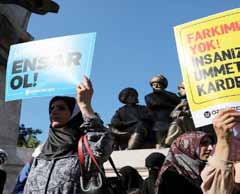


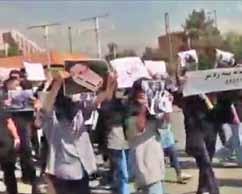

Issue 1923- September- 23/09/2022A Weekly Political News Magazine 5 23/09/22 40 Hesham Selim: The Actor with Bold Stances who Died Bereft of his Family 58 The Mental Powers of Super-Agers Syrians Working in Turkey: No Rights, No Legal Protection 28 What the Open App Markets Act Means for the Future of Big Tech 56 60 “Boundless: The Rise, Fall, and Escape of Carlos Ghosn”26 Peace For the Souls of Iranian Women Cairo’s Darb El-Barabra42
napshot



 Women pose for a photo next to a robot, during the opening of a ‘phygital’ store in Dubai, United Arab Emirates, September 15, 2022.
Dubai launches GCC’s ‘phygital’ store
Women pose for a photo next to a robot, during the opening of a ‘phygital’ store in Dubai, United Arab Emirates, September 15, 2022.
Dubai launches GCC’s ‘phygital’ store
6 16/09/22
S
REUTERS

7 16/09/22
napshot



 Woman wearing traditional attire take a selfie as they practice the Garba, the traditional dance of Gujarat state, ahead of Navratri in Ahmedabad, India, Tuesday, Sept. 20, 2022. The Hindu festival of Navratri, or nine nights, will begin Sept. 26. /AP
India Hindu Festival
Woman wearing traditional attire take a selfie as they practice the Garba, the traditional dance of Gujarat state, ahead of Navratri in Ahmedabad, India, Tuesday, Sept. 20, 2022. The Hindu festival of Navratri, or nine nights, will begin Sept. 26. /AP
India Hindu Festival
8 23/09/22
S

9 23/09/22
EGYPT
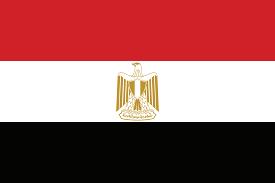
Visitors to Egypt can once again stop by the historic 'Tree of the Virgin Mary' in Cairo's Matariya district, a place where believers say the Holy Family passed during their journey through Egypt from Judea.
The tourist attraction and religious site underwent renovations in 2019, and the tree's sprawling limbs now have supportive pillars and fencing.
"The Tree of the Virgin Mary is an ancient tree, a sycamore tree, that dates back to more than 2,000 years ago, under which the Holy Family took refuge during their escape to Egypt," said site manager Asmaa Abdel Aziz.
"The tree had weakened in 1656, so Franciscan priests collected its branches and it sprouted again."
LEBANON


Crisis-hit Lebanon hopes to adopt key reforms demanded by the International Monetary Fund for a long-delayed but urgently needed bailout before the end of next month if there is “political will”, Lebanon’s caretaker economy minister said Tuesday.
Amin Salam spoke to The Associated Press after meeting with an IMF delegation that has been visiting Lebanese o cials since Monday. The reforms would include restructuring the country’s banking system and banking secrecy laws.
The Indian had discussed institutionalizing Saudi Arabian Both governments joint projects India, LNG development facilities in

SAUDI
10 23/09/22
government said on Monday that it discussed the feasibility of institutionalizing rupee-riyal trade with its Arabian counterpart.
governments rea rmed cooperation in projects including a re nery in western infrastructure investment, and development of strategic petroleum storage India, the statement added.
SAUDI ARABIA UAE

The United Arab Emirates will launch its rst lunar rover in November, the mission manager said Monday. Hamad Al Marzooqi told The National, a state-linked newspaper, that the “Rashid” rover, named for Dubai’s ruling family, would be launched from the Kennedy Space Center in Florida sometime between Nov. 9 and Nov. 15.
The exact date will be announced next month, he said. The rover is to be launched aboard a Falcon 9 SpaceX rocket and deposited on the moon by a Japanese ispace lander sometime in March.
IRAQ

Iraq’s top court ruled Wednesday that it does not have the legal right to dissolve parliament, a much anticipated decision that raises the stakes in the country’s unprecedented 11-month political crisis. The ruling by the Supreme Federal Court states the court does not have the authority under Iraq’s constitution to dissolve the legislature, which was a key demand by in uential Shiite cleric Muqtada al-Sadr. Al-Sadr’s bloc won most votes in parliamentary elections last October but he has been unable to form a majority government. His followers stormed the parliament in late July to prevent their rivals from Iran-backed Shiite groups from forming the government.
IRAN
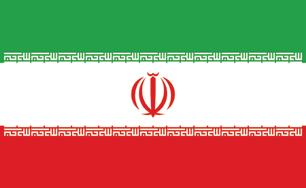
Four people were killed in Iran's Kurdish region on Monday when security forces opened re during protests over the death of a woman in police custody, a Kurdish rights group said, on the third day of turmoil over an event that has ignited nationwide anger.
Mahsa Amini, a 22-year-old from Iran's Kurdistan province, fell into a coma and died following her arrest in Tehran last week by the morality police, sparking demonstrations in numerous areas including the capital.
Two of the people were killed as security forces opened re on protesters in the Kurdish city of Saqez, Amini's hometown, the Hengaw Human Rights Organisation said on Twitter.
11 23/09/22
A WEEK ACROSS
CHILE.
The Chilean government was engulfed in a diplomatic spat Friday after the South American country’s president suspended the acceptance of the credentials of the new Israeli ambassador due to increased military activity in the occupied West Bank.
U.S.

U.S. Secretary of State Antony Blinken will host the Partners in the Blue Pacific (PBP) countries on Thursday with the aim of better coordinating assistance to the region in the face of competition from China, a White House official said.
The group was formed in June and includes the United States, Australia, Japan, New Zealand, and the United Kingdom.
India has observer status with the PBP, White House Indo-Pacific coordinator Kurt Campbell said in remarks at an event in New York. A few other countries would join too, he said.
Campbell said circumstances for the Pacific islands countries were "much direr" than in the past.
"Their livelihoods are threatened," he said, pointing to the "existential" threat they face from climate change and the severe impact of the COVID-19 pandemic on tourism revenue and business.
“Israel views with severity the puzzling & unprecedented behavior of Chile. This seriously harms the relations between the two countries,” Israel’s Foreign Ministry wrote on Twitter.

The Israeli ambassador, Gil Artzyeli, went to the government offices in Chile’s capital of Santiago Thursday to present his credentials to President Gabriel Boric along with other diplomats but was stopped in his tracks.
Artzyeli “was already at the place, waiting to go into the room, when the minister of foreign relations came up to him and said that due to an incident that had taken place … with the death of a 17-year-old teenager in an operation by the Israeli military, the president had decided in that context to postpone the delivery of the credentials,” a diplomatic official with close knowledge of the incident who was not authorized to speak on the record told The Associated Press.
U.K.
Leaders and monarchs from around the world gathered in London on Monday to bid farewell to Queen Elizabeth at a state funeral of inimitable pageantry, marking the passing of a beloved figure who helped unify the nation through her 70-year reign.
Hundreds of thousands of people queued to file past the casket of Britain's longest-reigning monarch at London's historic Westminster Hall during her lying-in-state, and thousands more lined the streets to witness a sombre display of royal pomp.
They, like many across the globe including U.S. President Joe Biden, came to pay tribute to the 96-year-old who earned respect for her sense of duty and represented a constant as Britain's role in the world diminished and changed.
,
12 23/09/22
ACROSS THE WORLD
UKRAINE.
Russian President Vladimir Putin on Wednesday called up 300,000 reservists to fight in Ukraine and said Moscow would respond with the might of all its vast arsenal if the West pursued what he called its "nuclear blackmail" over the conflict there.
It was Russia's first such mobilisation since World War Two and signified a major escalation of the war, now in its seventh month.
It followed recent setbacks for Russian forces, who have been driven from areas they had captured in northeast Ukraine in a Ukrainian counter-offensive this month and are bogged down in the south.
In a televised address to the Russian nation, Putin said: "If the territorial integrity of our country is threatened, we will use all available means to protect our people - this is not a bluff".
Russia had "lots of weapons to reply," he said.
CHINA.
U.S. President Joe Biden said U.S forces would defend Taiwan in the event of a Chinese invasion, his most explicit statement on the issue, drawing an angry response from China that said it sent the wrong signal to those seeking an independent Taiwan.
Asked in a CBS 60 Minutes interview broadcast on Sunday whether U.S. forces would defend the democratically governed island claimed by China, he replied: "Yes, if in fact, there was an unprecedented attack."

Asked to clarify if he meant that unlike in Ukraine, U.S. forces - American men and women - would defend Taiwan in the event of a Chinese invasion, Biden replied: "Yes."
The CBS interview was just the latest time that Biden has appeared to go beyond long-standing stated U.S. policy on Taiwan, but his statement was clearer than previous ones about committing U.S. troops to the defend the island.
The United States has long stuck to a policy of "strategic ambiguity" and not making clear whether it would respond militarily to an attack on Taiwan.
INDIA.
The French foreign minister said Wednesday that the war in Ukraine will not overshadow France’s commitments to the Indo-Pacific region, where India and its allies view China’s rising influence with suspicion.

13 23/09/22
Cover story
Grief Proves to Be Itself
By Luisa Markides

Death can elicit unusual responses. It can surprise us, transfix us, divide us, or unite us. The death of Queen Elizabeth II - a much-loved, much-admired, incredibly long-reigning monarch who served as sovereign of 32 states - certainly elicited a response, one felt at an indi vidual, communal, national, and international level. In many ways, it was seismic. That four billion people are estimated to have watched her funeral this week - more than half the world’s entire population – shows how in both life and death, the woman once known as ‘Lilibet’ was huge.

14 23/09/22
the Medicine
Dealing with the Loss of Beloved Monarch Under the World’s Gaze Shows How Unity is Possible
Now that Elizabeth II has finally been laid to rest and the Royal Family has entered its period of mourn ing, there is time to take stock. Arguably, it behoves the viewing public a moment to reduce this world event down to its most basic, personal, ground level analysis: that this was ultimately a family having lost a beloved family member.
On the pillow, their grief will be just like anyone else’s, yet in the public eye, as they are so often, it is prostrate and highly visible, with the pomp and ceremony. Ogling all this has been thousands upon thousands of well-wishers, lining routes and pews, queuing overnight for days to pay their respects to a woman they likely never met.
Let’s rewind. It is just over two weeks ago that the sorrowful news was announced at around 18.30 GMT on 8 September 2022: The Queen, aged 96, had died. Records flowed from her like smiles. She was the longest reigning monarch in almost 1,000 years of British history. Hers was the longest recorded reign of any female head of state anywhere, ever. It was the second longest reign of any sovereign ever, of ei ther sex. Superlatives upon superlatives. And she was loved, too. Most publics tire of their leaders, yet her later-year approval ratings regularly hit 90 percent. She seemed everlasting and was incredibly popular for it.
As Head of the Commonwealth, The Queen was the head of far more states than just the United Kingdom, yet to those outside the UK she was often known as the ‘Queen of England’, making it interesting, ironic, and apt that she should die in Scotland, at Balmoral Castle in Aberdeenshire, the private home of the Brit ish monarch ever since it was first bought for Queen Victoria by Prince Albert in 1852. She loved Scot land and Scotland (largely) loved her. It was a poorly guarded secret that this apolitical sovereign sincerely hoped that Alba remained in Albion.
The cause of her death is not known, nor does it mat ter. In the end and at the end she was able to close her eyes for eternity, in peace, and without suffering, something all of us would like to say of our loved ones. Death, as we know, is dealt with not by the dead but by the living, and upon hearing the news, many found comfort and solace in the idea that The Queen was now reunited with her husband Prince Philip, who died a year earlier and to whom she was married for 73 years.
It seems exaggerated to say that the past two weeks have changed UK history, but it is true, especially when you consider that The Queen was history. She embodied it, represented it, drew lessons from it, and cited it with quietly private effect. World leaders valued and hung off her every word, not just the 15
British prime ministers who served under her but vis iting heads of state, too, including several American presidents. To them, The Queen’s “pearls” were of wisdom, not jewellery.

Following her death, national changes have been many and immediate. For one, the national anthem now calls for God to “save the King”, when for more than 70 years Brits have urged God to “save the Queen”. For many, the change will take time to get used to. Most Britons are under the age of 70, so by definition, most have known no other monarch. It has seemed, at times, that she would go on forever – im mortal. Yet the rules apply to all: there is no holding on to life, no matter who you are.
For reams of people from Britain and abroad, there was no holding on to their grief either. Thousands flocked to Buckingham Palace in the minutes and hours after news of The Queen’s death broke. Taxis formed an impromptu line of honour. Some came with camping gear and stayed overnight. Some stayed for ten days, through all weathers, until the funeral. It was less of a ‘response’ from the Great British public, more of an outpouring.
Hundreds of thousands of floral tributes came flood ing in, creating an astonishing floral array laid out across Green Park opposite The Queen’s London home. This scene was repeated outside all her homes – not just at Balmoral, but at Sandringham in Nor folk, and of course at Windsor, where she was this week laid to rest. In the sea of cards and bouquets, several Paddington Bears and marmalade sandwiches were left in a nod to Her Majesty’s TV appearance alongside the fictional Peruvian character from chil dren’s literature, aired for her Jubilee earlier this year. Her family issued statements: from her son, King Charles III, and his wife Camilla, the Queen Con sort; from her grandson, William, and his wife Kate, now the Prince and Princess of Wales; from her other grandson, Harry, and his wife Meghan, the Duke and Duchess of Sussex; from her daughter, Anne, the Princess Royal; and from her sons, Edward, the Earl of Wessex, and Andrew, the Duke of York. William’s comments seemed to strike a particular
Hundreds of thousands of floral tributes came flooding in, creating an astonishing floral array laid out across Green Park opposite The Queen’s London home. (Photo by Luisa Markides)
Records flowed from her like smiles. She was the longest reigning monarch in almost 1,000 years of British history.
15 23/09/22
over story
chord. He said The Queen “was by my side at my happiest moments and by my side during the saddest days of my life”. He added: “I knew this day would come, but it will be some time before the reality of life without Grannie will truly feel real.”
After all the individual statements, with Royals say ing their things in their way, they all got in line and did things together as a family, first holding vigil in Westminster Hall as The Queen lay in-state, then marching together through London and later Windsor in memorable, choreographed, televised processions behind The Queen’s coffin on the day of her funeral.
Preceding all that, in the days following The Queen’s death, Charles’s new role saw him embark on a light ning tour of the UK. He had been in Scotland when The Queen died. From there he flew to London to
hold his first audience with the British prime minister (Liz Truss, who was also new in the job). He then ad dressed the nation in his first speech as king, during which he referred to his mother’s “promise of life long service” made 70 years ago, of which he said: “I renew [this] to you all today.”
In the speech, he positioned himself as a king of all. “In the course of the last 70 years we have seen our society become one of many cultures and many faiths. The institutions of the state have changed in turn. Whatever may be your background or beliefs, I shall endeavour to serve you with loyalty, respect, and love.”
The next day, Saturday, he underwent the official proclamation process, involving the Accession Coun cil, then on Monday he flew back to Edinburgh to meet Scottish politicians and receive a Motion of Condolence, as The Queen’s Coffin lay in St Giles’ Cathedral in the Scottish capital, for Scots to pay their respects.
On Tuesday, The Queen’s body made the long and final journey from Scotland to London via the Royal Air Force. Anne, the Princess Royal, accompanied her body through the rain, arriving at Buckingham Palace late in the evening. The Queen’s coffin was laid in the Palace’s Bow Room while the King and Queen Consort flew to North Ireland to view an ex hibition about the late monarch and meet the prov ince’s politicians, before heading back to their Lon don home, Clarence House.
On Wednesday, The Queen left Buckingham Palace
At 06:02am on the day of her funeral the final members of the public pay their respects at the coffin of Queen Elizabeth II, draped in the Royal Standard with the Impe rial State Crown and the Sovereign›s orb and sceptre, lying in state on the catafalque in West minster Hall, at the Palace of Westminster, London.

Picture date: Monday September 19, 2022. Yui
Mok/Pool via REUTERS
Elizabeth II was laid to rest alongside Philip, her mother, her father (King George VI), and her sister Margaret. And that, after ten days and 70 years, was that.
16 23/09/22
C
for the last time, her coffin travelling by gun carriage and in silence to Westminster Hall, where Elizabeth II then lay in-state for four days. The Coffin was fol lowed on foot by Charles, Anne, Edward, Andrew, William, and Harry. William later said it “brought back memories” of him walking behind his mother’s coffin through London in 1997.
For four days, from the moment The Queen’s coffin was placed on a catafalque and made accessible to the public in London, an incredible 250,000 people queued for up to 26 hours to spend just a few sec onds stood in front of the late monarch. Many felt they owed it to her. When, for several hours, officials
tried to temporarily stop people from joining what affectionately became known as ‘The Queue’, all it did was create ‘a queue for The Queue’. Friendships were made as people stood in line overnight in cold autumnal temperatures. In some cases, love was even found.
A portrait of Britain’s Queen Elizabeth is seen in a window, following her death, in London, Britain, Septem ber 17, 2022. REUTERS/ Marko Djurica

On Thursday, the King continued his four-corners foray, visiting Wales to meet politicians, before fly ing back to London to stand in military uniform in front of his late mother’s coffin alongside his three siblings. On Friday, he received representatives of the 15 Commonwealth Realms, where he is now Head of State. On Saturday, he undertook political engagements, and on Sunday, he hosted a State Re ception at Buckingham Palace for around 200 heads of state and royalty.
As a mark of respect for The Queen, these world leaders were banned from using helicopters or their own cars but were instead escorted to the Royal Re
 London, United Kingdom -19/09/2022. King Charles III and his family follow the gun carriage carrying his late mother the Queen Elizabeth II to her funeral at Westminster Ab bey, Westminster. Joshua Bratt/Pool via REUTERS
London, United Kingdom -19/09/2022. King Charles III and his family follow the gun carriage carrying his late mother the Queen Elizabeth II to her funeral at Westminster Ab bey, Westminster. Joshua Bratt/Pool via REUTERS
Hundreds of thousands of mourners lined the route, both for the procession and to see the hearse travel by car out of London towards Windsor.
17 23/09/22
over story
ception by bus from a London hospital (President Biden was granted an exemption, arriving via ‘The Beast’ - an armoured vehicle used by all recent White House occupants). Charles, meanwhile, issued an other statement. He and Camilla had been “moved beyond measure by everyone who took the trouble to come and pay their respect to the lifelong service of my dear mother,” he said.
Finally, the big day arrived, designated a national holiday in the UK. Around mid-morning, streets emptied, people heading home to watch events unfold on the TV. Among the first, The Queen’s coffin was brought out and laid on a 100-year-old gun carriage, to be pulled by-hand by around 140 serving members of Philip’s beloved Royal Navy, through the streets of central London, towards the venue for the State Funeral - nearby Westminster Abby. Elizabeth knew
it well. It was where she was crowned, and where she and Philip had tied the knot. The funeral came to an end just before midday. This was followed by a period of two minutes’ silence, in which the nation stood still, a gesture observed im maculately by millions. The coffin was then drawn on the gun carriage in a walking procession from Westminster Abby to Wellington Arch at Hyde Park Corner, with senior Royals walking behind, amidst a glittering array of military uniforms from the UK and abroad.
Hundreds of thousands of mourners lined the route, both for the procession and to see the hearse travel by car out of London towards Windsor. As it passed, crowds clapped and cheered, threw flowers, took photos, waved Union Jack flags. Some cried. All re membered a monarch they held in genuine affection.
Around 3pm, The Queen’s coffin arrived at Windsor, where the walking procession continued up Wind sor Castle’s Long Walk, before entering St George’s Chapel for a further service in front of around 800 guests, an altogether less formal affair consisting mainly of friends and former staff. That evening, there was a private family service. Elizabeth II was laid to rest alongside Philip, her mother, her father (King George VI), and her sister Margaret. And that, after ten days and 70 years, was that. The country woke up again on Tuesday morning and
The funeral came to an end just before midday. This was followed by a period of two minutes’ silence, in which the nation stood still, a gesture observed immacu lately by millions. (Photo by Luisa Markides)

The Royal Family – now led by King Charles - will now need to find a way to fill the void left by someone who was both so towering and so deeply loved.
18 23/09/22
C
was told to get on with it. At the same time, the Roy al Family disappeared from view for a week, in part to recover from what even ardent critics will admit was an exhausting schedule.
The Queen had died. The country – nay, the world –had come to a stop to doff its hat, bow its head, and remember a remarkable woman on whose 25-yearold head the Crown had been placed all those years ago, upon the sudden death of her father. The world, the UK, and the monarchy may all now be much changed from what they were in the year of Eliza
beth’s coronation, but her dedication to duty and ser vice throughout her seven-decade reign has remained resolutely unchanged.
It is the living who must deal with death, and like any other family, the Royal Family – now led by King Charles - will now need to find a way to fill the void left by someone who was both so towering and so deeply loved.

Death can indeed elicit unusual responses. Elizabeth II’s death elicited a response of unity – not just from an often-fractious Royal Family, but from a kingdom and a Commonwealth not always known for being on the same page. Watching her funeral on Monday, it felt for once – if only for once - that the UK and the world had finally come together in peace, and with one aim: to bid farewell to an extraordinary Queen who was a role model for so many - and loved be yond boundaries.
 Hundreds of thousands of floral tributes came flood ing in, creating an astonish ing floral array laid out across Green Park opposite The Queen’s London home. (Photo by Luisa Markides)
Hundreds of thousands of floral tributes came flood ing in, creating an astonish ing floral array laid out across Green Park opposite The Queen’s London home. (Photo by Luisa Markides)
World leaders valued and hung off her every word, not just the 15 British prime ministers who served under her but visiting heads of state, too.
Britain’s King Charles follows the gun carriage carrying his late mother the Queen Elizabeth after her funeral at Westminster Ab bey, Westminster, London, United Kingdom Septem ber 19, 2022. Joshua Bratt/
Pool via REUTERS
19 23/09/22
Iranian Women Abused by Morality Police
By Ahmed Taher
Mahsa Amini, 22, is a new icon who gave her life in defense of Iranian women’s freedom, exposed the in human conditions they face in a society that still lives
in darkness, and became evidence to the closed-minded approach of Iranian police in dealing with citizens. This is a crisis confronting the Iranian state in the af termath of the death of Mahsa Amini after she was ar rested in mid-September (2022), by the so-called “Mo rality Police” in Tehran under the “application of the
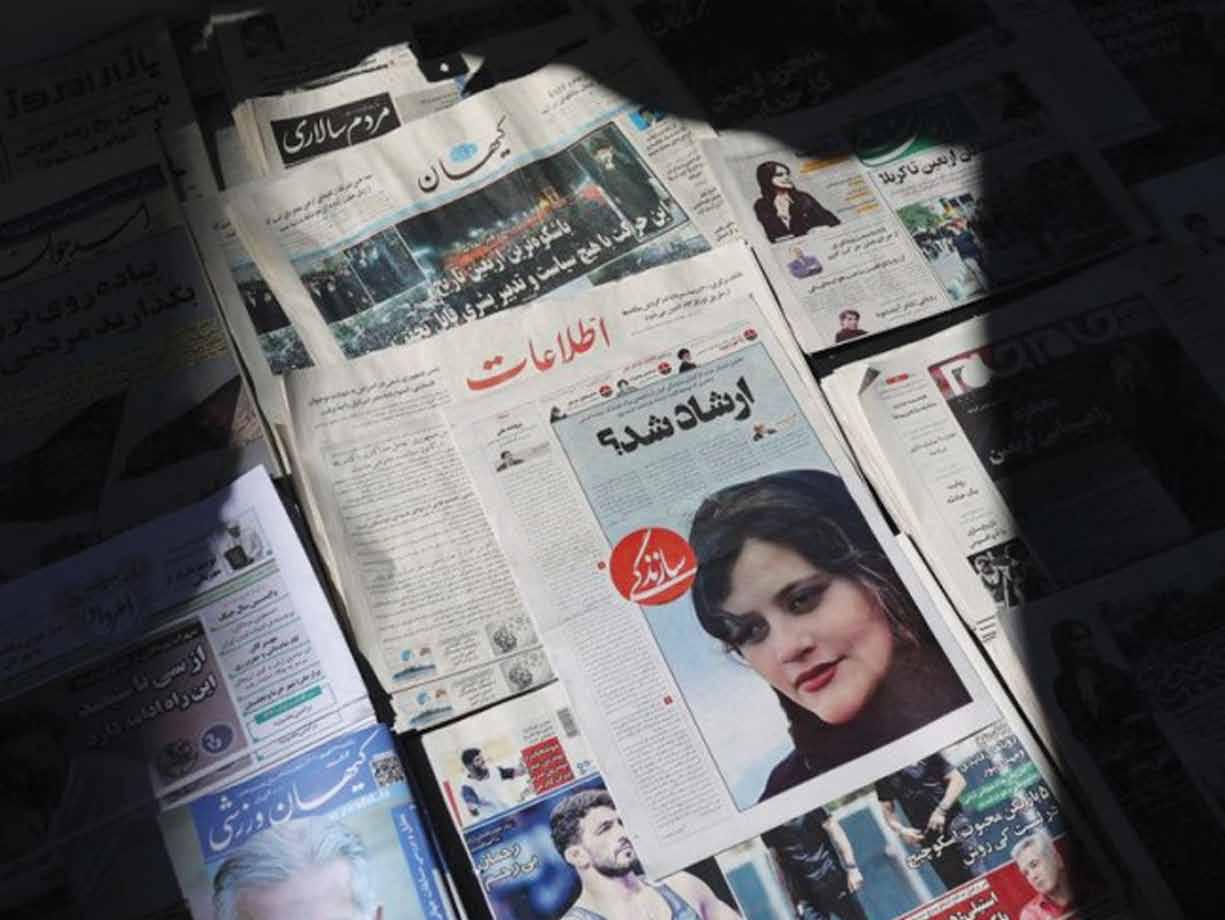
In the face of Iranian oppression, Mahsa Amini is a humanitarian symbol
20 23/09/22
Politics
A newspaper with a cover picture of Mahsa Amini, a woman who died after being arrested by the Islamic republic’s “Morality Police,” is seen in Tehran, Iran, September 2022 ,18 Majid Asgaripour/ WANA (West Asia News Agency) via REUTERS
compulsory hijab laws.” These laws were enacted after the revolution in 1979 that was dubbed “Is lamic,” but in essence was the complete opposite of that description. How is it possible to pass legisla tion requiring all women, regardless of nationality or religious beliefs, to wear a headscarf that covers the head and neck?
This incident has added fuel to the fire of grow ing rage, not only among Iranian women over their tragic situation, but also among the majority of Ira nian society, particularly youth groups of both sexes who are fed up. They are living under suffocating conditions and incur huge losses to serve a group of mullahs that still wield power under flimsy pretexts reminiscent of mediaeval ages. As if these mullahs were given divine permission to rule a people who were once known for their intellect, knowledge, and civilization, but today, they are begging for food and struggling to meet their basic needs. This is shown by the ongoing protests inside Iran sometimes over the deteriorating standards of living and other times over the lack of water.
This report examines one aspect of the tragic reality experienced by Iranian women under the “Moral ity Police.” While the term suggests positive con notations on a verbal level, police practices on the ground have demonstrated inhuman brutality. The Iranian regime customarily coins slogans and uses attractive terms to deceive the simple people, in or der to cover its abuses and violations. Perhaps the term “Morality Police” is one of these slogans or terms.
Here, the tragedy of Iranian women can be presented in two pivotal points. The first is related to the role of the Morality Police and its transgressions, the sec ond is related to domestic and international reactions to Amini’s death.
AN IRANIAN TOOL TO STRANGLE FREEDOM
As authoritarian or autocratic regimes attempt to dominate the resources of their homelands and lives of their citizens, they use various tools that can be political, religious, security, media, educational, cul tural, economic, etc. All of these tools are used to influence people’s lives, out of fear that the citizens will deviate from the boundaries drawn by these re gimes which can signal their downfall and the trial of its leaders, as shown in the historical record of similar regimes.
Perhaps what has happened in Tehran since the 1979 coup did not deviate from this approach. The mul lahs quickly imposed a package of repressive meas ures to curb thought and lifestyles, and to impose

their own perspective on state institutions and so ciety.
One of these tools was the establishment of a spe cialized police known as the “Morality Police,” which monitors the extent to which citizens adhere to strict dress and behavior codes. They would con duct “guidance patrols” in Iranian streets, where they arrest and punish women. For example, if a woman appears in public wearing a dress that is un like the Iranian chador or a full covering, she will face consequences. Young men are not also exempt from reprimanding by these cops if their clothing is not satisfactory, in their opinion.
Anyone who violates their “code of conduct” risks being dragged into a “Guidance Patrol” car and taken to a “corrective institution,” where he/she will be taught how to be a good citizen. Otherwise, they will face imprisonment or a fine, according to the prevailing standards of the ruling mullahs. Needless to say, the role of Morality Police inspired a group of young information programmers to de velop an Android application that allows Iranians to avoid these officers. Gershad is an application that mainly relies on the GPS service. When a young Iranian user a checkpoint of “Guidance Patrol,” all he/she needs to do it to report its location. As more reporters send the patrol’s location, the app would fix it on the map and thus other app users can avoid passing there and change their route. If fewer reports are sent about a certain patrol location, the app will gradually remove it because those routes are con stantly changing.
The Iranian authorities were able to block the ap plication 24 hours after its release due to their strict and extensive control over the Internet. But the speed with which Iranian citizens interacted with the app, prompting the government to ban it within one day, reflects a public rejection of the state’s curbs on freedoms. Rather, the concept of this application prompted citizens to respond to what happened by publishing satirical tweets like: “While the rest of
The tragedy of Mahsa Amini was not the first of its kind, and it will not be the last. Arrests, assaults, and daily violations against Iranian women are common in the Morality Police records.
21 23/09/22
the world develops applications to locate police in order to benefit from their protection, we (Iranians) develop applications to protect ourselves from po lice.” Another user wrote: “How desperate must we (Iranians) be to develop an app to avoid the police on the street because of our fear of them?” Such criticism condemns the Iranian police, given the fact that they are the regime’s most used tool to repress citizens, and condemn the regime that has become bankrupt in the eyes of its citizens and has lost its political legitimacy.
In addition to the foregoing, there is another dimen sion to consider about the role the police in general and the Morality Police in particular. Morals repre sent a system of values that guides individual behav ior without the need for a police force to force them to abide by these values. When these values turn into legal rules they need to be enforced by police.
Here, the Iranian state must review the inhuman models that it is trying to impose on society under flashy slogans that are not helpful any more in an open world. When a country speaks about censor ing the Internet, it is referring to a capability that no longer exists. In fact, young people frequently use proxy servers to circumvent the ban imposed by au thorities on social media, such as Facebook, Twitter, and others. This proves that the world has become closer than the mullahs of Tehran imagine. They still believe they can isolate their society, as they did when they overthrew the government and took over the country in the late 1970s. They ignore how things have changed and the world has developed.

AMINI’S TRAGEDY: MASSIVE DOMESTIC OUTCRY AND FEEBLE INTERNATIONAL RESPONSE
The tragedy of Mahsa Amini was not the first of its kind, and it will not be the last. Arrests, assaults, and daily violations against Iranian women are common in the Morality Police records. The Iranian police statement attempted to deny responsibility for the murder, stating that: “Amini was stopped with others in the hall to give them explanations and directions about the dress to be worn, and although there was no physical contact between the officers and Amini, she suddenly fainted while she was with others.” In an attempt to clear the policemen of criminal re sponsibility for her murder, state television broad cast images of the victim falling to the ground in a large hall full of women while arguing with an
Nasibe Samsaei, an Iranian woman cuts her ponytail off during a protest following the death of an Iranian woman after her arrest by the country’s Morality Police in Tehran (AFP)
Nuclear deal negotiations with the Iranian side are still ongoing, as if what is happening inside Iran has no effect on the stances taken by the European and American parties.
22 23/09/22
Politics
In a photo taken Monday by an individual not employed by the Associated Press and obtained outside Iran, a police motorcycle burns during an apparent protest in downtown Tehran related to the death of Mahsa Amini. (AP)

official about her dress. Her father, however, denied this: “Those who say she had previous diseases are lying,” Amjad Amini says.
“Mahsa did not have epilepsy or heart disease,” he said, casting doubt on the authenticity of the video released by the police, saying: “It was cut up, why did they not publish the segment when she was be ing led from the police car to custody? What exactly happened there? They traumatized her and then the disaster happened.”
This was backed up by a wave of widespread op position from Iranian citizens in general, and Iranian women in particular. Saeed Dehghan, a prominent Iranian lawyer, described Amini’s death on Twitter as “murder and a blow to the head that fractured the base of her skull.”
Hadi Ghaemi, the head of Iran’s Center for Human Rights, blamed the Iranian government, saying: “The Iranian government is to blame as she was arrested under the state’s oppressive and discriminatory veil law and died in custody.”
Crowds of students at Tehran and Mashhad universi ties, on the other hand, organized vigils against the Iranian authorities, holding banners condemning the suppression of freedoms and violence against wom en and chanting, “Freedom - Women - Life.”
After the burial ceremony, there were clashes be tween police and protesters in Sanandaj, the center of Kurdistan province and the birthplace of Amini. They chanted “Death to the dictator” in reference to the Iranian leader, Ali Khamenei. They also dropped a large banner bearing the image of Qasem Soleima ni, the commander of the Quds Force who was killed
in an American strike in early 2020. The protests have grown and intensified to the point that many people have died as a result of the increas ing violence used by Iranian police against protest ers. These developments open the door to the poten tial consequences and implications for the Iranian political situation, given the obscurity surrounding the health of the Iranian leader Ali Khamenei. His lack of interaction with such events, despite the gravity of their consequences, reveals that the mul lahs’ regime is currently facing an intertwined crisis. Opposition Kurdish parties have also called for general strikes in Kurdish cities in the west of the country. In the meantime, Iranian women launched a “Challenge” campaign on social media to burn head scarves, with some even posting videos.
In the same context, many Iranian filmmakers, art ists, athletes, politicians, and religious leaders vent ed their rage on social media. Mohammad Khatami, former Iranian president and reformist movement
This incident has added fuel to the fire of growing rage, not only among Iranian women over their tragic situation, but also among the majority of society members.
23 23/09/22
leader, urged authorities to “stop acts that violate the law, logic, and Sharia and bring the perpetrators of the incident to justice.”
He also called on the National Trust Party (Etemad Melli), led by reformist leader Mehdi Karroubi, to pass legislation to end the forced veil. The Iranian Film Actors Syndicate also issued a statement de manding that the hijab-enforcing police patrols be discontinued.
Asghar Farhadi, who won two Academy Awards for Best Foreign Film, wrote, “Mahsa is more alive to day than we are because we are sleeping and not re acting to this never-ending cruelty. We are complicit in this heinous crime.”
Several Iranian newspapers with reformist tenden cies also condemned the Iranian authorities’ ap proach. The Aftab newspaper referred to the shock caused by the incident throughout the country. “People were shocked and angry because of what happened with Mahsa Amini,” Etemad newspaper wrote, noting that “the nation has repeatedly noticed the violence of the Morality Police.” Jomhouri Eslami newspaper also warned of what it described as the “social division” caused by the vio lent behavior of police officers, and the economic newspaper Asia published on its front page a photo of the victim’s grave with the headline: “Dear Mah sa... Your name will become a symbol.”
On a global scale, reactions were more akin to lip service. The UN Special Rapporteur on the situation of human rights in Iran, Javaid Rehman, expressed his regret over the authorities’ behavior in Amini case and stressed that the incident is indicative of widespread violations of human rights in Iran. He
also called for a United Nations resolution con demning the country’s forced veil law. Jake Sulli van, National Security Advisor to US President Joe Biden also tweeted: “We are deeply concerned by the death of 22-year-old Mahsa Amini, who was re portedly beaten in custody by Iran’s Morality Police. Her death is unforgivable. We will continue to hold Iranian officials accountable for such human right abuses.”
Amnesty International also called for “a criminal investigation into the circumstances surrounding Amini’s suspicious death, including reported torture and other abuses in custody…Three days before her death, the so-called Morality Police in Tehran arbi trarily arrested her while the enforcing abusive com pulsory veiling laws. All individuals and officials involved must be brought to justice.”
Nevertheless, meetings and negotiations with the Iranian side regarding the nuclear deal are still on going, as if what is happening inside Iran has no effect on the stances taken by the European and American parties who are currently engaged in the negotiation rounds. This is a significant indication that issue of human rights raised by Western coun tries (the United States and its allies) is completely politicized. It is used to achieve the interests of these parties, regardless of the situation of human rights.
A question is raised about Western inaction in face of this heinous crime committed by the Iranian police in broad daylight without any concern for the consequences. The Iranian regime undoubtedly knows how to manage their interests with the West separately from human rights, which is at the fore front when the West addresses the regional coun tries.
Therefore, Tehran did not pay much attention to the international criticism as much as it feared the es calating internal outcry. It tried to contain the crisis fearing it would worsen and expand. To start with, President Ibrahim Raisi called Amini’s family con firming, according to a presidential statement, that “your daughter is like my daughter.” He also prom ised that he would “follow up the investigation until the circumstances of the case were clarified.” The Iranian Vice President for Women Affairs, Ensieh Khazali, also stated that “she had a direct contact with the girl’s parents to offer condolences and to assure them of a serious follow-up to the issue until all aspects of the incident are clarified.” In addition, the Speaker of the Parliament Mohammad Bagher
A protester holds a portrait of Amini during a demonstration in Istanbul on Tuesday. Amini’s death has prompted protests in cities around the world. (Ozan Kose/AFP/Getty Images)

Khamenei’s lack of interaction with such events, despite the gravity of their consequences, reveals that the mullahs’ regime is currently facing an intertwined crisis.
24 23/09/22 Politics
Ghalibaf announced the formation of a fact-finding committee, saying “I assigned the Internal Affairs Committee to investigate the circumstances of Amini’s death.”
In conclusion, despite its depiction of the bleak situ ation of Iranian women, Mahasa Amini’s death is an opportunity for the Iranian society in general, and Iranian youth in particular, to take an ongoing stance rather than a momentary reaction that can fade with in few days, until a similar crime is repeated. If the incident gains a temporary momentum which will then fade away, the situation will worsen and get more complicated, and the grip of the Iranian state and its repressive apparatus will tighten on the Ira nian people.

The people should instead benefit from everyone’s acknowledgement that there are shortcomings and violations. As explicitly stated by Iran newspaper on September 19, 2022: “Amini’s death was bitter and sad, and it left us bitter. Yes, there are undeniable flaws and shortcomings in this regard that should not be overlooked.” It is vital to raise the demands for
reconsidering the package of laws restricting free doms in general, and the freedoms of Iranian women in particular.
Will this moment help the Iranian society improve their situation, protect their rights, and regain their liberties?
Tehran did not pay much attention to the international criticism as much as it feared the escalating internal outcry. It tried to contain the crisis fearing it would worsen and expand.
25 23/09/22
pinion
Peace For the Souls of Iranian Women
by Alia Mansour
When a person accused of crimes against humanity is elected president, the death of a detainee under torture becomes unsurprising. When the country is governed by a mentality that reflects hostility to women and consid ers them as subordinate beings who do not enjoy the rights that some men do, the arrest and torture-to-death of a woman because she did not wear what the regime’s men see as an appropriate garment becomes news that occurs repeatedly.
The Islamic Republic of Iran is unlike any other place, not because the regime believes that violence is the best way to deal with its people. There are also many republics where the situation is similar and uglier, and even in Iran, those who practice violence and mur der claim to do so by divine command.
Ebrahim Raisi was elected President of the Islamic Republic of Iran in 2021 in an elec tion that was said to have been decided in advance after all of his real competitors were excluded from the elections by the Guardian Council. He is himself the main suspect in the 1988 massacre when he was a member of what is known as the “Death Commission.” The summer massacre of 1988 was more than just the execution of thousands of detainees. Years ago, the “record of executions” was published, which included statements made by the late Shiite cleric Ayatollah HusseinAli Montazeri (Khomeini’s successor and the first leader of the revolution until his removal in 1988) during a meeting with members of the “Death Commission,” which massacred tens of thousands of political pris
oners in the summer of 1988.
According to the records, which were de stroyed after the Ministry of Intelligence put pressure on Montazeri and his son’s offices, Montazeri opposed the execution of women, particularly virgin girls, and demanded their release in exchange for a written pledge to discontinue their affiliation with opposition organizations.
Montazeri said in his memoirs, published in 2000, that rape of virgin girls in prisons was widespread, as he wrote:
“I told the judicial authorities, Evin Prison officials, and other officials, quoting Imam (Khomeini), that it is not permissible to ex ecute girls in the People’s Mojahedin Or ganization of Iran, and I also advised the ju diciary not to issue death sentences against them. This is what I said, but they twisted my words and said, quoting me, “Do not ex ecute virgins, but they must be married for one night before being executed.”
Many human rights organizations confirmed this, and they spoke about intelligence and Revolutionary Guards elements raping many girls imprisoned on charges of membership or association with opposition organizations before they were executed.
Majalla published testimonies of families of victims of the mullah regime’s executions in its October 1, 2016 issue. Among these tes timonies was that of Iranian political analyst Feh Razeen Al-Karbasi, who stated: “Iran is not governed by any constitution or law because they consider that they are still in a revolution and that the Iranian Islamic revo

26 23/09/22
o
lution is still going on, and this is what makes the validity of the revolutionary courts eternal, and I do not see that there is any difference be tween what happened after the revolution, i.e. between 1981 and 1988, and what happened before the revolution, i.e., before 1979.”
Al-Karbasi stated in his interview with Majalla at the time that: “In the case of women, virgin prisoners are raped prior to the execution of the death sentence, based on a Shiite belief that the virgin enters heaven, so she is raped with a temporary marriage contract to legitimize rape.”
A few days ago, two pictures of an Iranian girl named Mahsa Amini went viral, the first show ing a smiling young woman wearing a head scarf without covering her entire head, and the second while she was on a bed in the hospital unconscious before she died later due to the beating to which she was subjected, prompt ing official Iranian TV to announce that, “un fortunately, she died,” while Iranian police described the incident as an “unfortunate in cident.”
Mahsa Amini isn’t just one story. This is the Guardian of the Jurist’s Iran, where women are executed, tortured, and their faces mutilated with acid, while the justification is always “reli
gious.” What kind of religion is this, and whom are they deceiving, if the virgin is destined for heaven, how can committing the crime of rape change her fate? If a non-veiled woman violates religion and Sharia, will the Iranian regime con vert them into believers by forcing women to cover their entire head and neck? Who are the religious mongers making fun of? How can a believer condone such behavior?
Today, protests rage in the streets of Iran in re sponse to Amini’s martyrdom, but the Iranian women’s misfortune is that every time the Ira nians become enraged, there is an administra tion in the White House willing to overlook anything in order to reach an agreement with the mullahs of Tehran. Have we forgotten the “Green Revolution,” or have we not heard about what Afghan women are subjected to, as a result of the agreement with the Taliban?
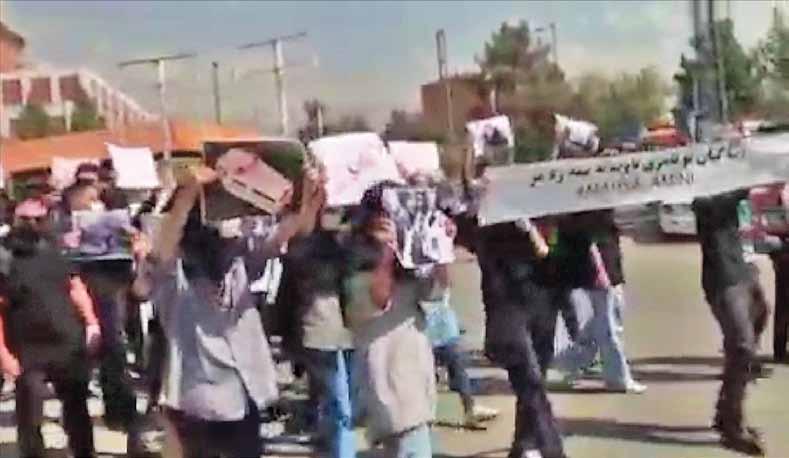
Has the Iranian government not previously barred women from studying in dozens of uni versity majors on the grounds that they would not be able to find work after graduation, ex plaining that Tehran barred women from study ing in more than seventy university majors in the country for various reasons?
Being an Iranian woman who dreams of life is a double curse during the mullahs’ reign.
People at Allameh Tabataba›i University (ATU), an Iranian public university, protesting following the controversial death of a young Kurdish woman while in custody by the «morality police», which enforces strict dress codes, in Iran›s capital Tehran on September 2022 ,19. (Photo by UGC / AFP)
The Iranian women’s misfortune is that every time Iranians become enraged, there is an administration in the White House willing to overlook anything in order to reach an agreement with the mullahs
27 23/09/22
Syrians Working in Turkey: No Rights, No Legal Protection Accuses Exploiting Syrian Workers
 By Jiwan Soz
By Jiwan Soz
The Syrian refugees in Turkey, particularly the workers, were planning a week-long strike earlier in September. The strike aimed to improve the situation of Syrian workers in a country with over three and a half million Syrian refugees. But what happened before this strike was called off for those who fled the war that has ravaged their country for more than a decade?
The idea for the strike originated with a Syrian businessman who resides in Turkey and holds Turkish nationality. This
plan was in furtherance of his opposition to the killing of a number of Syrians in recent attacks by Turkish extremists, as well as to respond to the call by right-wing parties for the expulsion of Syrian refugees from the Turkish territories and the withdrawal of temporary residence cards from them. However, Turkish security authorities quickly moved and detained businessman Abdullah Al-Homsi last week in the Turkish city of Istanbul. In addition to his call for Syrian workers to strike for their rights, Al-Homsi launched a scathing attack on Ümit Özdağ, the leader of Turkey›s right-wing extremist
28 23/09/22
An Economist
Turkish Business Owners of
Politics
(Reuters)
Victory party, who constantly demands the expulsion of Syrian refugees from Turkey, blaming the majority of the country›s economic problems on the Syrian presence. So far, Turkish authorities have not released the Syrian businessman, who also opposes Syrian regime President Bashar al-Assad. According to information obtained by Majalla from Turkish and Syrian sources, Al-Homsi did not attack the Turkish government, but only launched a stinging attack on the leader of the right-wing Victory party.
REPRESENTATIVES WITHDREW THEIR SUPPORT
Despite the fact that thousands of Syrian workers were preparing to go on strike in the Turkish establishments, institutions, and factories where they work, calls for a boycott of the strike contributed to its failure to take place, particularly with the entry of the Syrian Muslim Brotherhood group and their statement opposing the scheduled strike. Furthermore, prominent Syrian opposition figures, including well-known representatives like Abdul Hakim Quotaifan, have declined to support the idea of a workers› strike, despite having previously stated their full support for this movement.
EMPLOYERS TAKE ADVANTAGE OF REFUGEES
In this context, a well-known Turkish economic expert Khairy Kozanoglu emphasized that: «Whether Syrian workers strike or not, this does not negate or conflict with their need to obtain their full rights.»
«The calls for this strike came as a reaction to the trends and proposals of the leader of the far-right Victory Party, who calls for the deportation of Syrians,» the Turkish economist told Majalla, «but what happened was that the strike did not take place against the background of the intervention of Turkish-backed groups in the line of this crisis.»
«Whatever the reasons for Syrian workers› withdrawal from work, they and all migrant workers must have the right to work and strike, especially since we all know that Syrians work at low wages and without any social security, and this is what employers exploit, particularly in the country›s southeastern regions where there is a large presence of Syrian refugees,» he added.
Government agencies, according to the economic analyst, do not provide periodic reports or accurate information about the reality of Syrian workers in Turkey.
DIFFERENCES STANCES ON THE STRIKE
Majalla spoke with dozens of Syrian workers in various Turkish cities, the overwhelming majority of whom opposed the strike. «My personal stance on the strike has nothing to do with my political positions, but my family
will starve if I don›t work,» one of them told Majalla. He continued: «How will I provide for my family›s daily needs if I stop working and who will compensate me if my employer fires me from the factory where I currently work?»
Although this worker opposes strikes, he emphasizes that «confronting hate speech in Turkey is a necessary step,» adding that «I could have gone on strike now, if I had the means to secure my daily life.»
«I work for eight hours a day, and on some days I work for ten hours, so that I can pay the rent and secure the rest of my living costs, especially now that living costs have become more expensive,» he continued.
Another refugee working in a sewing workshop in Istanbul confirmed in an interview with Majalla: «The strike might have contributed to changing some of our conditions if all the workers agreed to stop working for at least a week.» He added that: «The owners of Turkish establishments want to hire Syrians because they work at low wages and without social guarantees from the Ministry of Labor.»
He also urged international organizations concerned with workers› rights to intervene to improve their working conditions and emphasize the importance of granting them work permits that guarantee them end-of-service compensation and health care if they are injured during their work.
NO COMPENSATION FOR WORKRELATED INJURIES

Furthermore, another Syrian worker who was injured at work revealed that he was unable to seek financial compensation, despite the fact that he was unable to work later on due to an injury that forced him to walk with crutches after a traffic accident on his way to work.
«The bus of the lab where I work collided with another bus and as a result I was seriously injured,» he said of
Syrian workers urge international organizations to intervene to improve their working conditions and help them receive work permits that guarantee end-of-service compensation and health care.
Syrian workers want to improve their working conditions in Turkey.
29 23/09/22
what happened to him.
«My Turkish colleagues received their compensation,» he explained to Majalla, «but I was unable to claim any compensation with the courts because I do not have a work permit, which disqualifies me from filing a lawsuit in the first place.»
TURKISH LAW RESTRICTS NUM BERS OF SYRIAN WORKERS
According to the testimonies of Syrian workers and many Turkish unions, including the Confederation of Revolutionary Trade Unions of Turkey, known in Turkish as DISK, which is Turkey›s oldest trade union federation, Turkish law allows the employment of one Syrian worker
for every ten Turkish workers.
According to a Syrian worker in Istanbul: «This law is not applied literally, as Syrian workers in factories, sewing and embroidery workshops are the majority, together with some refugees of other nationalities, compared to the number of Turkish workers.»
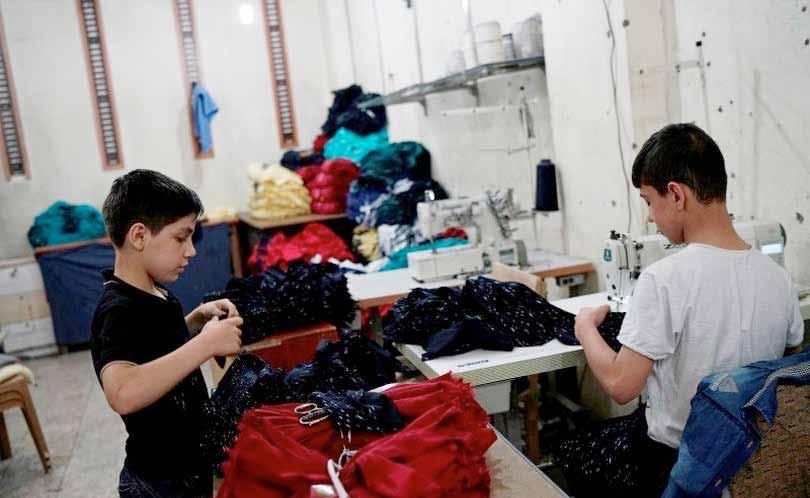
«Businessmen have for years preferred to hire Syrians because our presence in these facilities relieves them of the burden of paying the standard salaries. Syrian wages are low compared to Turkish worker wages, and they do not pay taxes for our work because we are not registered with the Ministry of Labor,» he added.
According to statistics provided by Turkish government agencies as well as international organizations dealing with labor and refugee issues, approximately 900,000 Syrian refugees are working in Turkey, with only about 70,000 of them having work permits. This figure excludes minor workers under the age of 18
According to the International Labor Organization, which is headquartered in Geneva, 90 percent of Syrians work in Turkey without work permits, which the organization describes as a «problem» that Turkey must resolve.
NO CHOICE FOR SYRIAN REFUGEES
Another Syrian worker told Majalla that he planned to use Turkey as a transit country to get to Europe, but what happened was the opposite of what he expected: «Turkey
Syrian workers in factories, sewing and embroidery workshops are the majority, together with some refugees of other nationalities, compared to the number of Turkish workers.
Syrian refugee boys work at a small textile factory in Gaziantep, where they are employed by a 30year-old Turk who gave his name as Selim, in Turkey, May . ,16 2016 REUTERS
30 23/09/22
Politics
was just a transit country for me. I entered it about two years ago with the intention of going to Europe, but I was duped by a smuggler, who vanished after I paid him the 5,000 euros I had brought with me from Syria.»
«Falling into the trap of fraud, I was forced to stay in Turkey, and thus work here without any guarantees or conditions protecting me,» he continued, noting that: «I can›t recover the money I lost in the fraud, especially with the Turkish lira›s decline, which means I›ll have to work for a long time or be deported to Syria because I don›t have a residence permit inside Turkish territory.»
According to a plan revealed by Turkish President Recep Tayyip Erdogan about three months ago, Turkey intends to deport more than one million Syrian refugees by mid2023 , but he did not provide any details about the mechanism for implementation or the Syrian areas to which the refugees will be returned.
Since Ankara announced its intention to deport more than one million Syrian refugees out of a total population of over three and a half million, hundreds of Syrian refugees have attempted to cross the borders between Turkey-Greece, and Turkey-Bulgaria in an attempt to reach a European country that will provide them with a better living.
According to a source in DISK, the majority of Syrian workers are attempting to accumulate money in order to leave Turkey illegally for Greece and Bulgaria. In addition
to its high financial cost, it is a physically arduous journey insofar as it requires walking for several days in the forests and through the passes between the mountains.
Despite having ratified the 1951 Convention and the 1967 Protocol relating to the status of refugees, Turkey does not grant Syrians the «right of asylum,» preventing them from legally entering the labor market. Instead, it has limited the geographical locations to European countries only as being countries from which refugees may enter.
As a result, Turkish authorities were content to grant Syrian refugees a temporary residence card known as «Kimlik» in Turkish, without providing them with travel documents that would allow them to enter and exit Turkey or enter the labor market legally.
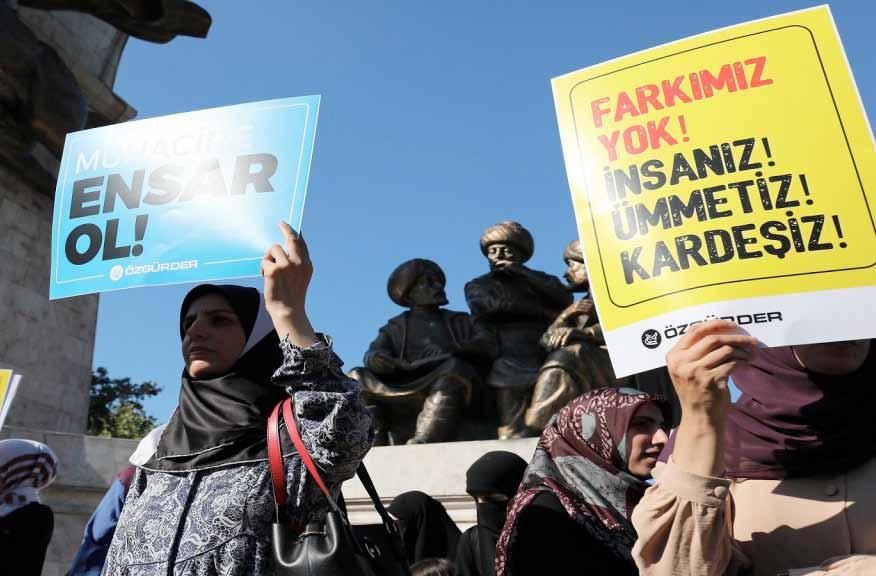 People protest the detention of businessman Abdullah Al-Homsi in the Turkish city of Istanbul.
People protest the detention of businessman Abdullah Al-Homsi in the Turkish city of Istanbul.
According to Turkish and international statistics, approximately 900,000 Syrian refugees are working in Turkey, with only about 70,000 of them having work permits.
31 23/09/22
Old World Order Real Origin of International Relations
 By Valerie Hansen
By Valerie Hansen
Before the West: The Rise and Fall of Eastern World Orders, by Ayse Zarakol. Cambridge University Press, 2022, 314 pp. How old is the modern world? Scholars of international rela tions tend to date the beginning of their field of study to around 500 years ago, when a handful of states in western Europe began to establish colonies in Africa, Asia, and the Ameri cas. In their view, the transformations unleashed by European colonialism made the world what it is today. So, too, did the 1648 Peace of Westphalia, two treaties signed by feuding Eu ropean powers that ended a series of bloody wars. That was the moment international relations truly began, the argument
runs. Thanks to this settlement, states for the first time formally agreed to respect their mutual sovereignty over demarcated ter ritories, laying the groundwork for the abiding “Westphalian order” of a world divided into sovereign nation-states. This rather Eurocentric view of the past still shapes how most international relations scholars see the world. When searching for the history relevant to today’s world events, they rarely look beyond the European world order constructed after 1500. Before then, they reason, politics did not happen on a global scale. And states outside Europe did not adhere to Westphal ian principles. As a result, international relations scholars have deemed vast tracts of history largely irrelevant to the under standing of modern politics.
32 23/09/22 Politics
The
An exclusive focus on a world in which Europeans armed with guns and cannons dominated the various peoples they encountered misses much of what happened outside Europe and the places Europeans colonized. This focus reads his tory backward from the primacy of the West, as if all that happened before led inevitably to the hegemony of a hand ful of European and North American states. The rise of nonWestern powers, such as China, India, and Japan in recent decades, has revealed how misguided such an approach is.

In Before the West, Ayse Zarakol, a professor of interna tional relations at the University of Cambridge, proposes an ingenious way out of this intellectual impasse. Writ ing in clear, forceful prose, she considers the experience of earlier non-Western empires that sought to create world or ders. Doing so makes it possible to present a new history of international relations beyond the Westphalian order. Her study reveals the telling ways that polities in non-Western parts of the world interacted with one another in the past, shaping how modern political leaders understand the inter national order today.
Zarakol challenges the view that the modern international system began in 1648 with the Peace of Westphalia. Instead, she proposes a provocative alternative, dating the beginning of the modern world order to 1206, when Genghis Khan was acclaimed ruler of all the Eurasian steppe peoples. Zarakol chooses to focus on the “Chinggisid order” he and his vari ous successors brought into being. (Genghis Khan’s name in Mongolian is Chinggis Khan, so scholars use the adjec tive Chinggisid to describe anything associated with him.)
She presents a stirring and original thesis but overlooks some crucial primary sources about diplomacy in the Mon gol empire. Such evidence would sharpen her account of precisely how the Mongols and their successors interacted with diplomats from neighboring states in this fledgling world order.
Zarakol is right to point out the importance of the Ching gisid order as a parallel to the Westphalian order. Starting in the thirteenth century under Genghis Khan and his suc cessors, the Mongols created the world’s largest contiguous empire, which extended across the steppe from Hungary in the east to China in the west. Genghis Khan aspired to rule the entire world, and he conducted diplomatic relations with his neighbors on that basis. None of his successors managed to control as large a territory, but taking the Mongols as their model, they would create the Ming, Mughal, Safavid, and Timurid empires respectively in present-day China, India, Iran, and Uzbekistan. Most important for modern interna tional relations today, the peoples now living in the former Mongol empire are fully aware of this past, as exemplified by the ambitions of Russian President Vladimir Putin.
THE WORLDS GENGHIS MADE
Zarakol’s decision to focus on the Mongols allows her to
break with Eurocentric conventions of diplomatic and in ternational history in refreshing ways. Interested in Asian polities, she does not assume that their interactions with Eu ropean actors were more important than their relations with one another. Nor does she make the mistake of assuming that earlier Asian powers were only regional powers. Geng his Khan and his successors all aspired to rule the globe as they knew it. True, they did not succeed (nor, for that matter, did any European power), but they led sprawling ar mies powered by mounted warriors and established empires that engaged in diplomacy with multiple neighbors and with states far from the Eurasian steppes—a lasting model for subsequent Asian rulers.
The Chinggisid order, as Zarakol describes it, persisted for nearly 500 years (longer than its Westphalian counterpart to date) and had three different phases. The first was from around 1200 to 1400. It comprised both the unified Mongol empire ruled initially by Genghis Khan and, after the empire broke apart in 1260, its four successor states in modern-day China, Iran, Russia and Ukraine, and Central Asia. The rul ers of the three western successor states eventually convert ed to Islam, while Kublai Khan, the ruler of the easternmost quadrant in modern-day China and Mongolia, supported Buddhists, Daoists, and Confucians, among other religious figures.
The peaceful coexistence of these quadrants in the four teenth century marked “the beginning of modern interna tional relations . . . when rational state interest trumped religious affiliation.” Here, Zarakol overstates her claim: re ligious affiliation was often interwoven with “rational state interests” in polities of that time. A ruler’s choice of which religion, or indeed religions, to patronize largely determined the choice of his political allies.
The second Chinggisid world order comprised the Timurid empire of Timur the Lame (also known as Tamerlane), who lived from 1336 to 1405, and the Ming dynasty in China, which reigned from 1368 to 1644. Timur modeled his state on that of Genghis Khan and even married one of his de scendants to strengthen his association with the great khan.
Most important for modern international relations today, the peoples now living in the former Mongol empire are fully aware of this past, as exemplified by the ambitions of Russian President Vladimir Putin.
Winston Churchill, Frank lin D. Roosevelt, and Joseph Stalin sit for photographs during the Yalta Confer ence in February 1945.
(Credit: Sputnik)
33 23/09/22
In sharp contrast, the rulers of the Ming dynasty in China concentrated all their resources on defeating various Mon gol and Turkic adversaries (including Timur’s warriors). Even so, the Ming emperors hoped to establish themselves as successors to the land empire of the Mongols, and they dispatched a fleet of treasure ships carrying 28,000 men as far as East Africa to display their might to the world. As different as their views of the Mongols were, Timur and the early Ming emperors all aspired to rule empires as large and as impressive as Genghis Khan’s. The third world order Zarakol proposes encompassed the millennial sovereigns, or sahibkiran, of the Mughals, the Ot tomans, and the Safavids. With no family ties to the Mon gols, these rulers did not explicitly style themselves after Genghis Khan, but all hoped to govern the world. They suc ceeded in harnessing the power of mounted warriors to con quer large spans of territory in modern-day India, Turkey, and Iran respectively, and their empires all posed serious competition to the European colonial powers. Appropriate ly, Zarakol ends her book with the weakening of these three dynasties around 1700.
Spanning five centuries, these Chinggisid states shared cer tain key features. Rather than choosing their ruler by pri mogeniture, as many European powers did, they selected new rulers through a system of “tanistry,” a term (borrowed from the historical practices of Celtic tribes in the British Isles) that means that the best qualified individual should rule the group after the death of a leader. Although this sounds vaguely democratic, it was anything but. In practice, it meant that anyone seeking power had to prevail in a vio lent free-for-all that could last years before all the warriors gathered to acclaim a new leader. The Mongols believed that heaven, or the cosmos, selected the ultimate victor in these succession struggles, and in their efforts to understand heaven better, the Chinggisid rulers invited foreign astrono
mers to visit their courts and financed the construction of massive observatories.
According to Zarakol, the Chinggisid rulers over the cen turies shared “a particular vision of the whole world” and created, modified, and reproduced “political, economic, and social institutions.” Historians have paid more attention to the granular reality of this political and institutional history, but Zarakol does a service by bringing it to the attention of scholars of international relations. In so doing, she moves beyond a Eurocentric vision of international relations by studying actors, specifically those in modern-day China, India, Iran, Russia, and Uzbekistan, who aspired to create world empires as impressive as that of the Mongols. Getting past narratives that are limited to a single country, race, or religion, she explains how different rulers in Asia interacted with each other and in the process created a diplomatic sys tem comparable to the Westphalian order.
FELT BOOTS AND METAL PASSPORTS
Five centuries is a long timespan to cover, and the first part of Before the West bogs down as it recounts the major events of multiple dynasties and explains why they qualify (or do not) as Chinggisid. But rather striking in her survey is the lack of much material about diplomacy, the book’s stated subject.

According to Zarakol, the Chinggisid rulers over the centuries shared “a particular vision of the whole world” and created, modified, and reproduced “political, economic, and social institutions.”
Before the West: The Rise and Fall of Eastern World Orders Book
34 23/09/22
Politics
This omission is surprising because two detailed eyewitness accounts of diplomatic visits to Chinggisid rulers are widely available in English translation. These narratives describe how the Chinggisid diplomatic order actually functioned— in contrast to Zarakol’s often rosy-eyed claims about the efficiency of Mongol rule.

William of Rubruck, a Franciscan monk originally from Belgium, visited the court of Mongke, a grandson of Geng his Khan, near Karakorum in modern-day Mongolia be tween 1253 and 1255. The French crusader King Louis IX sent William as a missionary—and not an envoy—to the Mongols, but when he arrived at the port of Soldaia on the Black Sea, his Mongol hosts had already heard from local merchants that he was a diplomat. William decided to ac cept the privileges offered to emissaries rather than try to explain his hope to missionize. Like all Franciscan friars, he wore a brown robe and went barefoot, attire that made his trip across the freezing steppe especially difficult. (Eventu ally, he gave in and donned fur clothing and felt boots.)
Although much less well known than Marco Polo’s trav elogue, which was written some 50 years later, William of Rubruck’s account runs nearly 300 pages in the 1990 trans lation by Peter Jackson. It offers the most perceptive and the most detailed description of the Mongol empire available today. An attentive observer, William wrote his dispassion ate report for a one-person audience, his sponsor, Louis IX. As he explained of the Mongols, “When I came among them I really felt as if I were entering some other world.” His ac count shows exactly how the Mongols treated the diplomats
who entered their realm. The Mongols granted a metal tablet of authority to all visit ing envoys that entitled them to food and fresh horses at the postal stations located every 30 miles or so along the main roads traversing the empire. Those carrying such tab lets could also spend the night at the postal stations. The system worked well but not flawlessly, as William discov ered when he crossed the Don River and the locals refused him assistance. It took three days for him to obtain a fresh horse. Travel conditions were arduous. Once William began to travel at the pace of a Mongol warrior, he could cover 60 miles each day, changing horses two or three times. Break fast was either broth or a light grain soup, and there was no lunch; the only solid food travelers received was at dinner. In July 1253, when he arrived at the court of Batu, a great-
Since the 1920s, Russian scholars, such as Nikolai Trubetzkoy, George Vernadsky, and Lev Gumilyov, have debated how two centuries of Mongol rule affected modern Russia.
Author Ayse Zarakol
35 23/09/22
Politicsgrandson of Genghis Khan, William requested official permission to preach among the Mongols (some of whom already followed the teachings of the Church of the East, the branch of Christianity that spread through much of Asia after the fifth century ad.) Batu sent William to the capi tal at Karakorum, where his father Mongke, the great khan, presided over the Mongol empire. William does not explain Batu’s decision, but presumably Batu, as a regional leader, handled all domestic matters related to his own jurisdiction but had to refer matters of international diplomacy to the great khan. Zarakol overstates the efficiency of Chinggisid rule: only the khan could make decisions on certain topics. If he was not available, no one else could decide for him.
William arrived at Mongke’s winter court on the River Ongin in modern Mongolia; there, the great khan spent the season surrounded by his retinue and his own herds. Wil liam made his request to proselytize through an interpreter, but the interpreter and the khan were drunk, and William did not get a definite answer. Initially permitted to stay two months at the court, William remained there for three and spent an additional three at the Mongol capital of Karako rum. He participated in a debate over religion with Mus lims, Buddhists, and other Christians—and for once he had a competent interpreter—but the debate was inconclusive, and William left without receiving permission to preach in side Mongol territory.
William’s account captures the reality of Mongol govern ance. Mongol rulers may have aspired to create a world order, but their empire remained profoundly decentralized despite the efficient postal system that allowed messages and people such as William to cross the empire. The great khan did not administer his empire directly. Instead, he appointed local governors who ruled on their own, largely continuing the policies of whichever authorities had gov erned before the rise of the Mongols.
About 150 years later, a Spanish diplomat had an experi ence remarkably similar to William’s. Ruy González de Clavijo visited Timur in Samarkand, a major trading em porium in modern-day Uzbekistan, for two months in 1404. Dispatched by Henry III of Castile, who hoped to form an alliance against the Ottomans, Clavijo and his entourage de livered a letter and gifts to Timur. The wealth of Timur’s capital, where 50,000 of his supporters pitched their tents, impressed Clavijo deeply. Timur hosted the Spaniards gen erously, offering them ample supplies of meat and wine and inviting them to multiple receptions.
But when Timur fell ill, three of his advisers took over. Un able to exercise any real authority, they urged the Spaniards to return home—which Clavijo resisted because his mission was to obtain a response from Timur for Henry III. Just two months after he had arrived, the unsuccessful Clavijo set off for Spain, only to be caught in the conflicts that broke out among those who aspired to take over Timur’s empire. Clavijo’s experience mirrored William of Rubruck’s: the only person who could decide anything about foreign rela tions was the khan himself.

Zarakol credits Genghis Khan with “disseminating, through his own example, the norm of the political ruler as the ex clusive supreme authority, legitimized by world domina tion.” She claims that he introduced “an extremely high degree of political centralization . . . subordinating all com peting forms of authority to himself.” During military cam paigns, the khan had the power to lead, and he rewarded his followers with plunder. But during peacetime, the ruler had much less power. Still, Zarakol’s views do not square with the experience of William of Rubruck and Clavijo. The khan maintained “supreme authority” in the sense that only he could decide on certain matters, such as giving a single Franciscan friar permission to preach or sending a letter to another ruler, but he never enforced policies that integrated the different parts of his empire in a meaningful way.
OTHER CENTERS, OTHER WORLDS
Scholars can debate whether a given interpretation of the past is accurate, but popular understandings of the past— especially among policymakers—often shape modern in ternational relations. As Zarakol suggests, scholars need to ask of the period she covers, “What logics were operat ing in this era that are still operating in ours?” Her final chapter explores Eurasianism—a late-nineteenth- and earlytwentieth-century intellectual movement that identified nonEuropean precedents for world orders spanning both Europe and Asia—and, more specifically, how intellectuals in Ja pan, Russia, and Turkey understood the long-term impact of Mongol rule on their own societies. This focus is particularly timely. Since the 1920s, Rus sian scholars, such as Nikolai Trubetzkoy, George Verna
Scholars can debate whether a given interpretation of the past is accurate, but popular understandings of the past—especially among policymakers—often shape modern international relations.
)Reuters(
36 23/09/22
dsky, and Lev Gumilyov, have debated how two centuries of Mongol rule affected modern Russia. They have called for modern leaders to emulate Genghis Khan and to unify Russians so that they can build a new empire that spans Europe and Asia. Such thinking has gained enormous popu larity since the collapse of communism, and Putin is regu larly compared to Genghis Khan. Putin’s advisers are not concerned with historical accuracy. In making the case for Eurasianism and how it will empower Russia, they invoke traditions that have nothing to do with the Treaty of West phalia. Zarakol’s point is well taken: the history underlying Eurasianism helps make sense of the events occurring in the territory once ruled by the Mongols.
Like any genuinely pioneering book, Before the West cov ers so much new ground that it does not get all the details straight. (In particular, it exaggerates the centralization of the Mongol empire.) Still, Zarakol has provided an impor tant service: she has shown how the history of different parts of the world before 1500 informs the present and the future.
By starting in 1206, however, she risks overlooking the importance of even earlier events. When Prince Vladimir the Great (Putin’s namesake) converted to Eastern ortho
doxy in around 988, his capital lay in Kyiv. The Russian president’s drive for a new Eurasian empire seeks to in clude the heartland of Russian orthodoxy, which formed in the late 900s.
That’s precisely Zarakol’s point: studying societies out side Europe that aspired to create world orders before 1500 reveals much about the modern world. The world orders that earlier rulers outside Europe established re main deeply relevant because the people who live in those regions today recall those past exploits and systems and sometimes try to recreate them. Paying attention to the diplomatic practices that earlier rulers, including the Chinggisids, developed provides a valuable counterbal ance to the singular focus on the Westphalian order. In this multipolar world, U.S. leaders spend their days con sidering the next moves of their counterparts in Ankara, Beijing, Moscow, New Delhi, and Tokyo. And yet they rarely consider the histories of these parts of the world. The time has come for more people to follow Zarakol’s lead and study the past of the many political and eco nomic centers outside Europe.
This article was originally published by Foreign Affairs.

37 23/09/22

2 A Weekly Political News Magazine www.majalla.com Issue 1923- September- 23/09/2022 Erling Haaland: Record Breaker and Master of Hat Tricks

Hesham Selim: The Actor with Bold Stances who Died Bereft of his Family
By Majalla
The death of the actor Hesham Selim was a shock to his fans, who hardly had time to understand the news of his cancer. The artist managed to hide the news for many months, during which he was being treated for advanced lung cancer He remained steadfast until his last moments, recalling how his father, famous football player Saleh Selim, dealt calmly with his liver cancer, and just as he did, Hesham Selim passed away quietly, apart from his family after two of his children left him with their mother outside Egypt
LINES IN THE LIFE OF HESHAM SELIM
Hesham Selim is the son of the Egyptian football player Saleh Selim. He graduated from the Faculty of Tourism and Hotels at Helwan University. His first appearance was through the character «Medhat,» the son of artist Faten Hamama in the movie Empire by Ihsan Abdel Quddous (script 1972 of M which was written in written by Naguib Mahfouz). Then he participated in the movie under the direction of Saeed Marzouk 1975 I Want a Solution in But his real breakthrough was at the age of sixteen when the great director Youssef Chahine chose him to present the main character of “Ibrahim» in his masterpiece The Return of the Prodigal Son (1976)
1980s, he presented several drama series, including Starting in Al-Raya Al-Bayda, Layali Al-Hilmiyeh, and others 1990s was a golden period in Hesham Selim›s artistic career, The on both the big and small screens. He starred in some dramas such as And Still the Nile Runs (directed by Mohamed Fadel),
Arabesque (directed by Gamal Abdel Hamid) and Hawanem (Garden City (directed by Ahmed Saqr
This timeframe also witnessed the emergence of the late actor›s talent in the field of stage shows, through the musical play Muhammad Ali Street (directed by Muhammad Abdulaziz), 1991 which he co-starred with Sherihan and Farid Shawqi in As for his latest work before his health deteriorated, it was the series Hagma Mortada (Counterattack) last year, written by Baher Dowidar and directed by Ahmed Alaa El-Deeb
HIS POLITICAL OPINIONS
25 Selim was known for his positions in support of the January which overthrew former President Mohamed ,2011 revolution in Hosni Mubarak, and for his interest in political and public affairs. He presented a talk show on one of the Arab satellite channels in 2014 and 2013
He had political positions, including skirmishes with the terrorist Brotherhood, as he asserted that it perverted religion, while he launched an attack on one of its leaders when he refused a request of clemency for an Egyptian artist for his support of religion. Please doublecheck me here as I deleted some words Hesham Selim criticized the Brotherhood›s calls to ,2013 In organize a massive protests in millions to purge the judiciary in the wake of the chaos the Brotherhood sought to spread following the popular ouster of its president, Mohamed Morsi
the Egyptian artist Hesham Selim launched an attack ,2016 In on his fellow actor Wagdy Al-Arabi from the Brotherhood, for refusing to pray for mercy and forgiveness for the late artist Mamdouh Abdel Alim
40 23/09/22
Art
REJECTING THE ROLE OF MUSLIM BROTHERHOOD MENTOR
Hesham Selim apologized for not participating in the ,2017 In series Al-Gama›a, Part Two, where he was going to play the role of the character Omar Al-Telmisani, the third general guide of the Muslim Brotherhood
According to local media, the apology came due to Hesham Selim’s objection to some points with the production company, and the difference of opinion on the staging, noting that he apologized to the production company because he was unable to coordinate the shooting schedule
HIS ILLNESS
The late artist suffered from lung cancer, and he did not discover his disease until his condition worsened, and his treatment became intractable

Doctor Yasser Abdel Qader, Professor of Oncology at Qasr AlAiny Medicine in Cairo, who supervised his treatment, revealed that he suffered from cancer in its advanced stages due to smoking, and that he underwent treatment for a whole year at Dar Al Fouad Hospital
Despite the difficulty of his condition, he underwent chemotherapy, according to his doctor, and also underwent immunotherapy, but he relapsed during his progress in treatment.
According to the medical team that supervised his treatment, he was dealing normally with lung cancer in the advanced stages of the disease, and he was aware that the goal of treatment in the
advanced stages of his disease is to increase the patient›s life expectancy and relieve pain only
In the hospital where he continued to treat for a whole year, the medical and nursing team dealt with a person of the highest morals, taste and respect, and he was responding to the doctors’ requests, despite his realization that it was too late. Despite his suffering, he did not reveal his cancer until only three months ago
HIS DAUGHTER AND TRANSGENDER
the late actor took a position that made him the talk ,2020 In of the Arab press and social networking sites, as he announced the transformation of his daughter Noura into a male, after she underwent a sex change operation
Selim said that Noura, who became Nour, faced many difficulties and an identity crisis, and said that he did not understand what was happening to her
He searched on the Internet and found only two people suffering from the same problem. Selim said that his daughter was thinking of suicide, and she felt that she was abnormal and could not live her life normally
He revealed that he encouraged and supported his child to change her gender, and said that the reason was the amount of bullying she had suffered and the criticism she had received. Adding that he wanted Noura, saying “my son” instead of “my daughter,” to live a normal life, and that he wanted him to live with him in Egypt despite criticism from people who forced him to stay away
HIS FAMILY PROBLEMS
Hesham Selim married twice, the first time to an Egyptian woman named Mervat El-Nahhas, with whom he had three daughters Nora, Zain, and Qismat
His first divorce was not amicable, as his wife traveled outside Egypt and took with her two daughters, Qismat and Zain, and it was reported that the artist had not seen them for a long time, and that his ex-wife deprived him of them
HESHAM SELIM’S LAST APPEARANCE
Hesham Selim chose isolation before his death, and he did not appear on any of his social media accounts and did not comment on any events
Many of his followers linked his absence to his health condition, and some of them confirmed that his health had deteriorated significantly, as evidenced by one of the photos published by his son, where he showed signs of illness and a substantial loss of weight
Hesham Selim was keen to reassure his fans that he was fine, but he was aware that he was fighting a difficult battle with a fierce disease that was diagnosed after it was too late
Egyptian actor Hesham Selim
41 23/09/22
Cairo’s Darb El-Barabra Culture
The History of a Present-Day Center for Joyful Shopping
By Salwa Samir
When an Egyptian bride thinks about preparing her new home, or someone thinks about buying the nec essaries for the celebration for a newborn, or buying any piece of home decor, whether old or modern, they think of one destination: Darb el-Barabra, one of the well-known popular markets in Egypt for happy oc casions.
The Darb (alley) el-Barbara is located near Attaba, a vital square in the heart of the Egyptian capital. It dates back to the Fatimid era. When the Fatimids came from Maghreb and conquered Egypt in 969, they established the city of Cairo north of Fustat as their capital, Gamal Abdel Rahim, Professor of Archaeol ogy and Islamic Arts, Faculty of Archaeology, told Majalla.
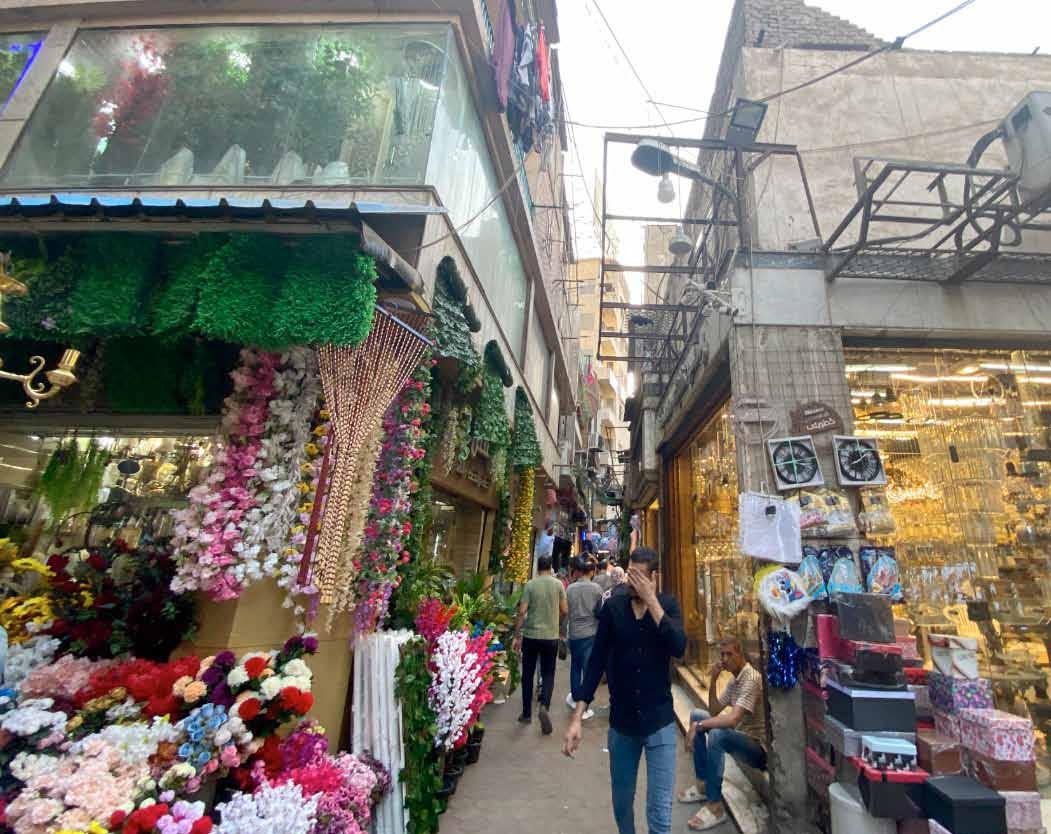
42 23/09/22
“Some of their armies were Berbers. When Jawhar, the leader of the conquest of Egypt, for the 4th Fatim id Imam-Caliph al-Mu’izz li-Din Allah, built Cairo he surrounded it with a wall made of clay, to be inhab ited only by the caliphs,” he said.
“The areas outside the wall were inhabited by the rest of the population. The Darb el-Barabra was inhabited by his army of Berbers, who were called Barabra by Egyptians,” he added.
In 1092, Badr al-Jamali, the vizier (high ranking advisor) for the Fatimid Caliphate under Caliph alMustansir, reconstructed the enclosure with stronger brick walls and monumental stone gates to strengthen the points of entry. Parts of this wall and some of its famous gates remain like Bab Al-Nasr, Bab Al-Futuh and Bab Zuweila.
Prof. Abdel Rahim added that when Saladin conquered the Fatimids and overthrew their dynasty in 1171, he demolished the wall and let people live wherever they wanted as there was no one place specified for rulers and others for commoners. He built a citadel which became the residence of rulers from the 13th to the 19th centuries.
“Thus Darb el-Barabra was just for Berbers to settle in. The trade appeared later in the Mamluk era and flourished in the Ottoman period from the 17th century until modern days,” Abdel Rahim said.
Once entering the alley your eyes will be caught by the glittering and gilded chandeliers hanging at the en trances of the shops and in the small alleys that branch out from it. Chandeliers are made of different materi als including crystal, whether original of pure glass or those made of plastic.
It is noteworthy that chandeliers have a deep root in Egyptian history, dating back to 5000 years. The Egyptians must have used some form of hand-held torch, which is generally described as bunches of reeds or sticks soaked in a flammable liq uid.

The earliest clay or stone lamps were shallow bowls in which a wick floated in a pool of oil, later versions were hand-float ed to
create a spout for the wick to rest in. The ancient Egyptians made the wicks by twisting to gether the fiber
from flax plants. They had a limited types of vegetable oils available to use as fuel, primarily castor or linseed oil, as well as an animal fat source.
During the Ottoman period (from 1517 until 1867) the industry of chandeliers became more common as people used them in lighting their houses. They were made of many materials such as wood, brass, iron and tin sheets in addition to those made of stainless steel, copper, ceramics and more.
At Darb el-Barabra, there are also shops selling toys, plastic and natural plants as well as roses, sweets, can dies and many items for decoration.
The variety in its goods prompts women who are about to get married to shop in Darb el-Barabra where eve rything regarding home decoration is available with affordable prices.
The darb and alleys branching from it are selling the sebou supplies as well. Sebou (baby shower) is a cele bration marking seventh day after the birth of the new born. This deep-rooted festival is ancient Egyptian as many murals during the New Kingdom (c.1550 BC–c.1069 BC) era depict similar steps of the celebration.
They sell sieves in which the infants are placed. It is a rounded tray with a bottom net originally used to separate flour from any impurities. But the sieves are well decorated and look like padded beds. They sell the blue-color sieve for families who have male in fants, and the pink color for the female infants.
In the sebou, the mother takes the decorated sieve in which the infant sleeps and places it on the table or
Shops at the alley sell gilded chandeliers, home decorations, and party necessities. (Photo by Salwa Samir)
The Darb’s shops appeared in the Mamluk era and flourished in the Ottoman period from the 17th century until modern day.
43 23/09/22
on the floor. Then the elder female of the family, usu ally the grandmother, sits beside and starts banging the copper pestle on a mortar many times, while uttering instructions to the baby like being dutiful to his/her parents.
The celebration also includes distributing small boxes full of candies, peanuts and popcorn to the attendees, also available at Darb el-Barabra. The small box con tains a card with the name of the newborn and the date
of birth written on it, and is tied with a satin bowknot with the name of the baby. Darb el-Barabra also sells decorations for all kinds of parties, whether for a birthday or a graduation, even the balloons that say “Get Well Soon” if you are going to visit a patient.
There are also shops selling antique pieces of decor, the prices of which vary according to their value.
In addition, on the occasion of Prophet Mohamed’s birthday (scheduled this year on October 7), the shops are filled with familiar toys for the celebration such as dolls made of sweets and others made of plastic at a cheap price and with a distinctive design. The same joyful atmosphere is felt during Ramadan, as most shops sell decorative lanterns and Ramadan-related toys.
Every night, Darb el-Barabra is illuminated by the lights of the chandeliers of its shops that you can see from a very far distance, as if the sun shines only there to attract visitors to its joyful atmosphere.

“In the tenth century, when the Fatimid General Jawhar built Cairo, the Darb el-Barabra was inhabited by his army of Berbers, who were called Barabra by Egyptians.”
Alleys branching from the Darb are selling the sebou (baby shower) supplies as well. (Photo by Salwa Samir)
44 23/09/22
Culture
 By Justin Chang
By Justin Chang
With her rousing new action-drama, «The Woman King,» director Gina Prince-Bythewood suggests that, in at least one crucial respect, the West African kingdom of Dahomey was more ahead of its time than that starry imperialist empire called Hollywood. An
early 19th-century epic awash in militaristic might and colonial oppression, the movie burnishes the truth and the legend of the Agojie, an all-female regiment of warriors who fought for Dahomey with great ferocity, unapologetic bloodlust and selfless abandon. And the most ferocious among them, at least in this swift and satisfying telling, was their top general, Nanisca, played
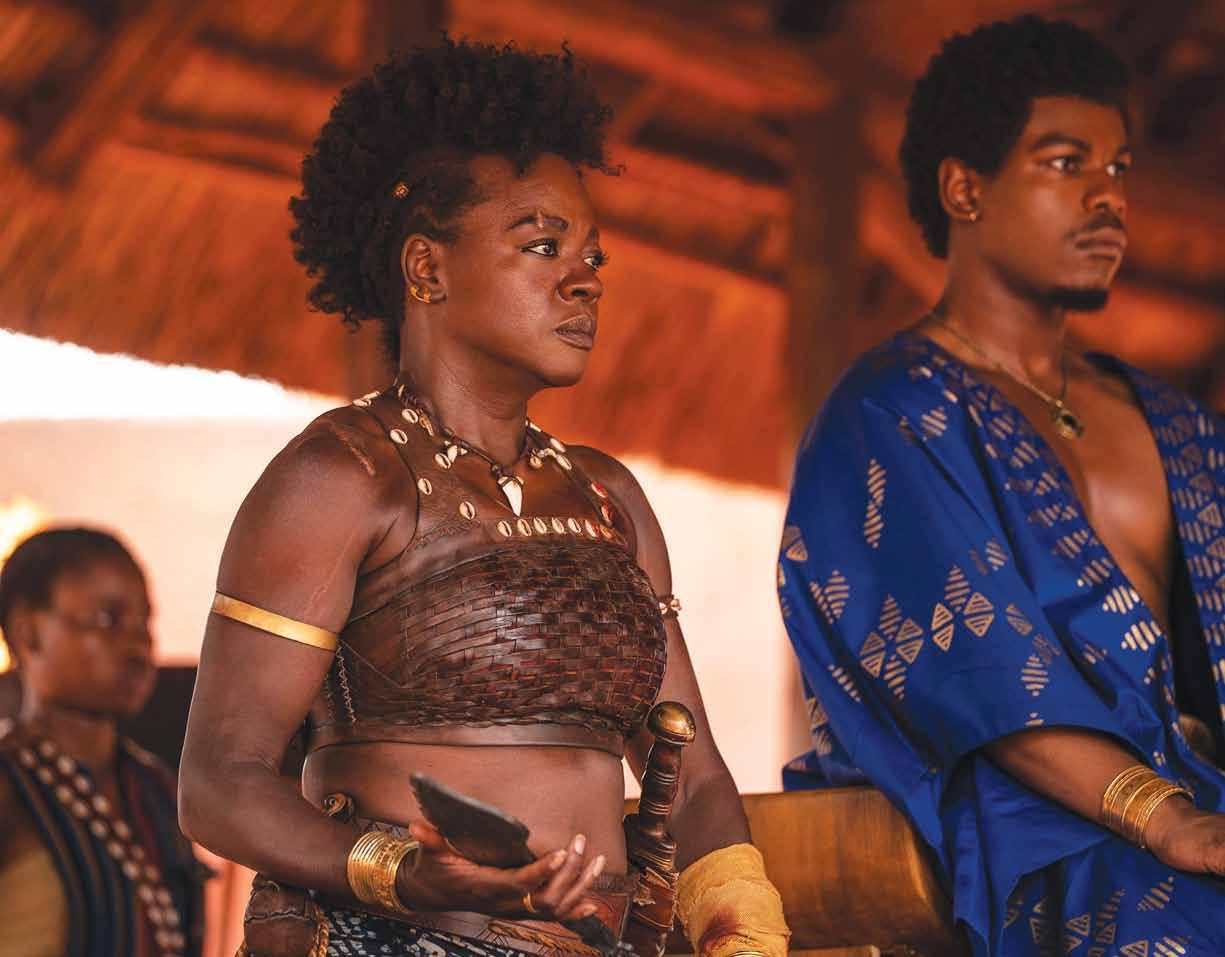
46 23/09/22
Viola Davis Adds Another Jewel to Her Crown in a Rousing ‹Woman King› An Epic True Story of Female Warriors oviesM
by Viola Davis in the first major action showcase of her career.
That›s a remarkable accomplishment if also a revealing one, and it speaks less to any heretofore uncharted depths of Davis› talent than to the limits of the film industry›s imagination. While her smarts and gravitas have always made her a natural fit for authority figures (she can do cunning government heavies in her sleep), it has seldom fallen to Davis to play the fearsome warrior.
Or, as we see in «The Woman King›s» cut-to-the-quick opening scene, to rise silently from the grasses, sword out, midriff bared, shoulders agleam with sweat and firelight. Her enemies are the gun-wielding, horseriding male soldiers of the Oyo Empire, who quickly set the stakes in a picture that aspires to the grandly epic scale of «Braveheart,» «Gladiator» and «The Last of the Mohicans.»
If «The Woman King» doesn›t always match the visceral intensity of those pictures — PrinceBythewood, a skillful director of action, keeps the carnage to a PG13 minimum — it nonetheless rises to the challenge of using an old-fashioned template to deliver a floodtide of exhilarating new images. To watch the Agojie warriors storm into battle, armed with swords and spears and led by Nanisca›s mighty ululating battle cry, is to encounter much more than the standard Hollywood vision of resistance in action. And before long, the Agojie›s ranks are fortified by a fresh batch of recruits, some of whom are refugees from neighboring realms and some of whom, like a stubborn teenager named Nawi (an outstanding Thuso Mbedu), have been disowned and deposited at the palace gates by their fed-up families.
Nawi isn›t a conscript; as Nanisca makes clear, joining the Agojie is a choice. If that feels like a slightly sanitized reading of a military apparatus fed by prisoners of war, it nonetheless suits the story›s dramatic purposes. Becoming a soldier is very much a choice for Nawi, whose impetuousness is both a strength and a weakness, one that Nanisca does her best to temper with a spirit of discipline and self-sacrifice. To join this elite warrior class means taking a vow of lifelong celibacy, dwelling in a women-only section of the palace and swearing allegiance to Ghezo (John Boyega), Dahomey›s male king. Naturally, it also means submitting to the kind of intense fitness regimen — running through thickets of thorns, decapitating dummies stitched from tightly knotted ropes — that
great training and competition montages are made of. Prince-Bythewood steers us through these sequences with terrific sweep and urgency, lingering just long enough for you to take in this world in all its rich, tactile particulars, from the straw roofs and red earthen walls of Akin McKenzie›s production design to the intricately patterned fabrics and elaborate beadwork of Gersha Phillips› costumes. (Terence Blanchard›s moving score heightens the immersion.) At times you wish the director would linger longer still, the better to let a deeper understanding of Dahomey›s rigid rules, meticulous hierarchies and tangled alliances seep into your bones.
The hard-working, sometimes muddled script, written by Dana Stevens (from a story credited to her and actor Maria Bello, who served as a producer), is too busy laying out the present-tense drama to delve into the history of how the Agojie women came to be. Nor does it unpack the tricky gender nuances of a kingdom where women who became Agojie were essentially considered to have become men, according to some historical accounts. To its credit, the movie does acknowledge some of the story›s uglier historical context, including the fact that Dahomey became a rich nation by profiting off the transatlantic slave trade, selling African prisoners to European invaders. (Jordan Bolger plays a hunky Portuguese-Dahomean explorer who catches Nawi›s eye in a perfunctory romantic subplot.)
Nanisca abhors her kingdom›s complicity in slavery and is determined to put an end to it — a shrewd if narratively convenient choice that makes her an unambiguously easy hero to root for. It›s not the

«The Woman King» burnishes the truth and the legend of the Agojie, an all-female regiment of warriors who fought for Dahomey with great ferocity, unapologetic bloodlust and selfless abandon.
1 Viola Davis, left, and John Boyega in «The Woman King.» (TriStar Productions/ Album/Zuma Press/TNS)
47 23/09/22
ovies
story›s only trade-off: If the general is easily the most physically imposing character Davis has ever played, that may necessarily preclude her from being the most interesting or psychologically complex. Fortunately, she doesn›t have to be: Commanding as Davis is to watch, she often cedes the spotlight to the other women in her midst. These include Mbedu, the South Africanborn star of last year›s limited series «The Underground Railroad,» and the Ugandan British actor Sheila Atim, who, as one of Nanisca›s deputies, can rivet the camera without a word. Most of all it includes Lashana Lynch («No Time to Die»), who›s funny, fierce and finally heartbreaking as Izogie, a warrior who takes Nawi under her wing.
The sense of sisterly solidarity that powers «The Woman King» is the movie›s raison d›etre; it›s also part of Prince-Bythewood›s authorial signature.
The sense of sisterly solidarity that powers «The Woman King» is the movie›s raison d›etre; it›s also part of Prince-Bythewood›s authorial signature. Since she made her feature debut with «Love & Basketball» more than 20 years ago, her commitment to centering women in her storytelling, especially Black women, has never wavered, even as it›s cost her opportunities in an industry that likes to pass off its racism and sexism as commercial imperatives. In recent years the Hollywood tide has clearly begun to turn for PrinceBythewood, on the evidence of «The Old Guard,» her bracing 2020 action-fantasy for Netflix about a band of immortal warriors. No one lives forever in «The Woman King,» but at its best it›s a reminder that history, even selectively dramatized history, doesn›t have to stay dead.
‘THE WOMAN KING’
MPAA rating: PG13 (for sequences of strong violence, some disturbing material, thematic content, brief language and partial nudity)

Running time: 2:15
How to watch: Now in theaters
This review was originally published by Los Angeles Times.
Lashana Lynch in the movie “The Woman King.” (Sony Pictures)
48 23/09/22
M

 Viola Davis as a general leading the Agojie into battle. (Ilze Kitshoff/Sony Pictures)
Viola Davis as a general leading the Agojie into battle. (Ilze Kitshoff/Sony Pictures)
49 23/09/22
Feature
The Unseen Libya
Libyan Photographer Promotes Natural and Historical Tourism with His Adventure Team
 By Amany M. Salem
By Amany M. Salem
In the middle of the desert and the rock forma tions, a camping convoy finally arrives carrying a group of young Libyan travelers to a region close to the Acacus Mountains in southwestern Libya, about 100 km away from Algerian border. The SUVs and trucks carrying the camping equipment stopped so the young adventurers could start to take the best shots of the variations of landscape. The Libyan Team for Travel and Adventure (LTTA) organizes trips that cover hundreds of kilometers of the North African country in search of unique areas which have not been visited by many people. The team captures the scenes in highly professional photos to let the world see the natural and historical treasures of their country that are worthy of visiting by adventurers.
NATURAL AND HISTORICAL SITES OF ATTRACTION
Little is known about the various tourist destina tions in Libya, as political turmoil, international meddling and economic repercussions domi nate the headlines coming from there. Libya fa mously has Africa’s largest oil resources but they have not completely benefitted the country due to the prolonged political crises. But it is yet to be known that the south Mediterranean coun try houses many marvelous sites of attraction to lovers of travel and adventure. These sites range from natural coastal and desert destinations to ancient architectural sites that can be traced back thousands of years.
Besides traveling to the desert, one of the main destinations organized by the Libyan team is Ja bal Akhdar, or the Green Mountain region in the northeast of Libya. The region is distinguished by its lush uplands and fertile valleys thanks to abun dant rainfall. It also has one of the most famous
Professional photographer and LTTA leader Sanad Ahlafi.
50 23/09/22
historical cities in the Arab world: the ancient city of Cyrene, which was built by the Greeks in 631 BC and was later Romanized. One of Cyrene’s most significant treasures is the Temple of Zeus, which is the second largest Greek temple after Athens’ Parthenon. Cyrene, known in Arabic as Shahat, was listed as a UNESCO World Heritage Site in 1982.

FROM AMATEUR PHOTOGRAPHER TO A LEADING ADVENTURER
The leader of the Libyan adventure team, Sanad Ahlafi, started his journey as an amateur pho tographer who was passionately taking photos of every beautiful scene in his country. He had the spark of an idea to form a team that can help him cover more natural and historical landscapes with photos and videos, in order to share them via social media platforms and let followers view the amazing side of his country.
“Photography was my main hobby and it changed my entire life, as I have pursued my career as a professional photographer. I have received many questions from young people who wanted to join my photography travels, so I decided to form a team to give more opportunities for more people,” Sanad Ahlafi told Majalla. He added that his idea appealed to many young people, photographers and travelers, so he de cided to take the responsibility of organizing and coordinating full trip programs.
A GROWING TEAM
The Libyan photographer said that the number of his team members has grown over the past four years, “Since 2018, more than 500 young men from all over Libya have participated in the team’s travels to various regions.”
“At the beginning we accepted only male adven turers, but as we receive more applications from female adventurers, we aspire to work with the Girl Guides of Libya to help organize family trips.”
He pointed out that the trips they organized were not limited to visiting difficult destinations, camp ing and taking photos, but they also helped par ticipants make friends.
Ahlafi explains that there are various types of trips organized by the adventure team, “In the
Castle Of Qasir Libya in Bayda city, Jabal Akhdar region. (Photo by Sanad Ahlafi)
Sanad Ahlafi formed the team to help him cover more natural and historical landscapes with photos and videos, in order let people view the amazing side of his country.
51 23/09/22
beginning we were only used to planning coastal trips, but we have expanded our plans to include uplands and finally have started to move towards the desert. Thus, we have three seasons in which we head to three different types of destinations: in spring we travel to the uplands, valleys and wa ter springs; in summer we go to the coasts and sea caves; and, in winter we usually opt for desert travels.”
DOMESTIC TOURISM FIRST Ahlafi stated that his team’s first mission is to pro mote domestic tourism in Libya, “in general we aim to spread the culture of tourism and travel in the country, keep our activities going before we can focus on growth.”
“We have highly organized programs, and good financial capabilities which helped small domestic
destinations thrive during our trips,” he said. “But security concerns and other hurdles, such as poor infrastructure and underserved destinations, took us some time to overcome and find temporary so lutions to serve the tourists.”
The team uses social media to present Libya’s sites of attraction to international tourists, but many factors affect welcoming travelers from abroad.

“The most important factor is statutory legislation that would facilitate the arrival of foreign visitors. Many elements intersect in this regard, such as the historical ties with other countries. But travel agencies can play a vital role to solve this,” he
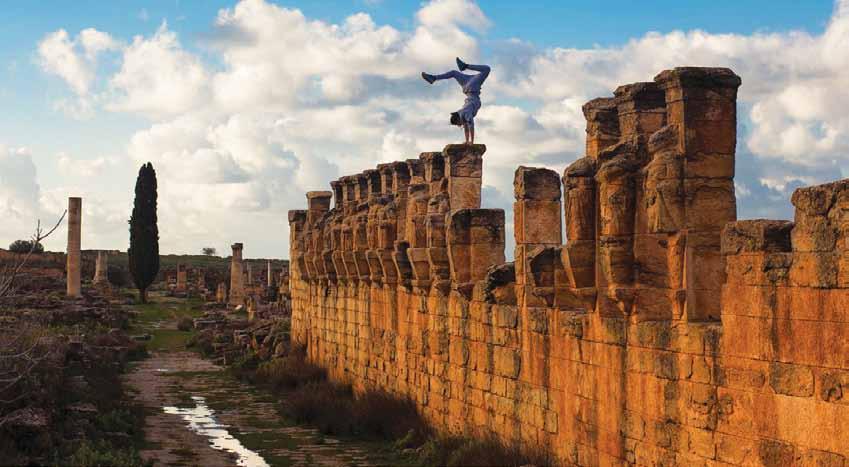
“It can take a month or two to plan for a trip, provide the required equipment, and most importantly, coordinate with all security authorities in the regions nearby the team’s camping points.”
City of Cyrene (Photo by Sanad Ahlafi)
Acacus desert (Photo by Sanad Ahlafi)
52 23/09/22
Feature
Libyan team of adventurers accompanied by desert patrols. (Credit: Sanad Ahlafi’s Facebook page Visit Libya)
added, “I also hope political and security stability is achieved so we can welcome our first group of foreign tourists.”
SECURITY CONCERNS
The Libyan team leader explained that measures to secure the current trips are taken by the com petent security authorities.
“Given the expensive equipment and photogra phy kits carried by the team, we share our plan, itinerary and camping locations with security ser vices and tourism police,” he added.
According to Ahlafi, it can take a month or two to plan for a trip, provide the required equipment,
and most importantly, coordinate with all security authorities in the regions nearby their camping points.
Moreover, Ahlafi said his team was planning to partner with other Arab adventure teams, similar to its existing cooperation with the Jordan Drone Club.

THE NATURE EFFECT
Is it true that travel and adventures can influence people’s lives?

Ahlafi answered: “Nature can be a safe refuge from the difficulties and crises people face in the cities.”
“Travel can offer a chance for mindfulness, medi tation and a calm lifestyle. Immersing oneself in nature provides a free mental therapy, which people should incorporate in their lives,” he con cluded.
Little is known about the various tourist destinations in Libya, which range from natural coastal and desert destinations to ancient architectural sites that can be traced back thousands of years.
Tahala village, southwest of Libya. (Photo by Sanad Ahlafi)
53 23/09/22
Po rt ra it
Erling Haaland: Record Breaker and Master of Hat Tricks
By Majalla
Illustrated by Jeannette Khouri

Last August, Manchester City striker Erling Haaland was named Player of the Month. Haaland had a historic month in the Pre mier League, scoring 9 goals in 5 matches for Manchester City, breaking the records of Sergio Agüero and Micky Quinn for the most goals scored in the first five games. Manchester City officially completed the signing of Haaland from Borussia Dort mund on June 13, 2022, with the forward signing a five-year contract that will keep him at Etihad Stadium until the summer of 2027.
“This is a proud day for me and my fam ily,” Haaland said after completing his relo cation. “I’ve always enjoyed watching City, especially in recent seasons. You can’t help but admire their style of play, it’s exciting and full of opportunities, which is ideal for a player like me.”
Haaland junior, the son of former City player Alfie, is generally considered to be one of Europe’s best strikers. The 22-year-old forward is widely regarded as one of Europe’s most exciting attacking talents. His prolific goal-scoring form has catapulted him to stardom in recent years, with the forward scoring 27 goals in 28 games in the 2020-21 Bundesliga season. Erling Braut Haaland was born in Leeds, England, on July 21, 2000. His father,
Alf-Inge Haaland, was a tough-tackling midfielder for Leeds United in the Premier League at the time. Erling and his family moved to Norway when he was three years old, following his father’s retirement from football.
Haaland began his career in 2016 at his hometown club Bryne. The rising star be gan receiving offers from bigger clubs, both domestic and international, after scor ing eighteen goals in fourteen games for Bryne’s reserve team.
The following year, the Norwegian moved to Molde, where he spent two seasons be fore joining Austrian club Red Bull Salz burg on January 1, 2019. The player has been outstanding since joining the club. He also became the second player in Champi ons League history, after Kareem Benzema, to score in three consecutive games.
On July 19, 2019, the player scored his first hat trick for RB Salzburg in the Austrian Cup. Only a month after scoring his first hat trick for the club, the player scored his first Austrian league hat trick against Wolfsberg.
Despite interest from Manchester United and Juventus, Haaland joined the Ger man club Borussia Dortmund on January 1, 2020. Since joining Dortmund, he has scored at least one goal in every game. He joined Borussia Dortmund for a fee report ed to be in the region of €20 million.
During the 2019-20 season, this natural born goal scorer became the first teenager
to score in five consecutive UEFA Champi ons League matches.
For his electric performances in front of the goalposts, the Norwegian striker was named the Champions League’s top goal scorer for the 2020-21 season, as well as the Bundes liga’s player of the season. Haaland also received the Golden Boy award for 2020.
Following the 2019 FIFA U-20 World Cup, where he won the tournament’s Golden Boot after scoring a tournament record of nine goals in a single match, Haaland made his senior team debut in September 2019. On September 5, 2019, he made his senior international debut for Norway in a Euro 2020 qualifying match against Malta. On September 4, 2020, he scored his first sen ior international goal for Norway in a 1-2 loss to Austria in the 2020-21 UEFA Na tions League B.
The Norwegian has admitted to enjoying meditation, and his signature goal celebra tion mimics the “zen” pose.
When asked about the significance of his trademark celebration in 2020, Haaland re plied, “I really enjoy meditation.” “It makes me feel calm and tranquil.” This is why, when I score, I sometimes celebrate in this manner.”
In his native Norway, Haaland has become a role model for a new generation of aspir ing footballers. Not only in Bryne, where his family is from, but many young people in Norway and around the world want to follow in his footsteps.
54 23/09/22

What the Open App Markets Act Means for the Future of Big Tech
The Act Would Have Huge Implications for Tech Regulation
By Chris Cardinal
Google and Apple are painting a pearl-clutching apocalyp tic picture of the ramifications of the Open App Markets Act. They’re quick to say their walled-garden app stores are necessary for our safety and privacy. But the reality is, they’re greedy, monopolistic rent-seekers, terrified at the prospect of being forced to open their platforms, and more crucially, at parting with some billions of dollars of pure profit.
Most people don’t realize that Apple and Google collect 30% of every app store purchase, microtransaction, and subscription. And while both have moved to reduce that to a “generous” 15% in some cases, this feint toward selfregulation still leaves a great deal to be desired.
While still in the introduction phase, the Open App Markets Act would, if passed, essentially dismantle the app market duopoly held by Apple and Google. This act is one cog in a larger wheel of reform, the American Innovation and

56 23/09/22
Technology
Prompted by an investigation by the Japanese Fair-Trade Commission, Apple will allow some companies to direct their users to payment methods outside its App Store.
Credit: (Brooks Kraft/ Agence France-PresseGetty Images)
Choice Online Act, which targets big tech companies for antitrust and consumer choice violations.
It’ll provide numerous victories for app developers, as well as anyone interested in curbing anticompetitive behavior in the free market (hint: that should be most of us). The big gest change would be that Apple (or similar companies) can no longer require developers to use or enable in-app purchases as a condition of the app’s distribution. App stores will also no longer be able to require price matching of hosted apps.
It’ll also prohibit punitive action against developers for us ing different pricing terms. And it’ll mean app stores can’t stop developers from speaking directly to their users about alternative pricing or payment methods. Phones would no longer default to the manufacturer’s app store, and devel opers would have additional protection against competitors using non-public information to develop copycat apps. Fi nally, the act would force Apple to allow sideloading and alternate app stores, like those we might see for gaming platforms like Steam and Epic. You can see why Apple is lobbying so hard against it.

The act would have huge implications for big tech compa nies and tech regulation, and it could alter the outcome of some current cases. Right now, Epic Games is appealing the Epic v. Apple decision from 2021. The lawsuit stemmed from Epic Games sidestepping the 30% processing fee that Apple imposes on all developers for in-app purchases. Epic drove users of Fortnite to purchase its in-game currency directly from Epic Games instead of Apple’s App Store payment system. Apple demanded that Epic update its app and ultimately removed Fortnite from the store when Epic refused. The judge ruled in favor of Apple, stating that Epic didn’t experience irreparable harm because of the app store removal.
Taxing other people’s hard work and innovation in app de velopment feels intrinsically unjust and is, quite frankly, exasperating. That is what this act is coming out against, and that is exactly why Epic sued Apple and is appealing the ruling. Another of the act’s aims is to regulate big tech and protect the future of technology. It’s the Wild West right now, which is how companies like Apple, Google, and Amazon have monopolized the industry so far.
The new law would level the playing field: App develop ers and consumers alike would have alternative avenues through which to distribute and download apps. The dread ed “Apple tax” would no longer be compulsory, as app stores could no longer force people on in-app purchases for subscriptions. This would change the market economics of the App Store itself and provide a boost to startups, no longer handcuffed by the 30% charge.
It’s worth calling out Apple and Google’s fear-mongering around this act as exactly that. We already have a perfect example to the contrary in our computers: Windows and OS X allow us to install and run whatever software we want. Apple and Google are arguing that their mobile operating systems are intrinsically and inviolably also an ecosystem, but that’s simply not true.
Even if the Open Markets Act passes, I don’t foresee an en masse shift of consumers from the core app stores on their devices. The first-party integrations still provide some nice features, namely convenience around cancellation and certain privacy enforcement. Passage would initiate a sea change in mobile gaming, though. Apple and Android both make a significant amount of their revenue from mobile gaming, and if they’re forced to allow the likes of Steam and Epic onto their phones, they won’t be happy. Perhaps more important, the change around in-app purchases will empower a new generation of startups.
At this point, the power is in Congress’ hands. The lan guage and details of the bill are swinging for the fences by taking away the in-app purchase requirements and allowing external app stores to emerge. The act’s enforcement allows plaintiffs (app developers) to go aggressively against app stores. Essentially, as an app developer, you could follow in Epic Games’s footsteps and point to how in-app purchases and other existing app store rules and restrictions prevented your success and then seek damages for it. App developers’ ability to sue is a game changer.
For me, what this act essentially boils down to is that taxing someone else’s innovation and creativity is wrong and that restricting what we can install on our devices feels anticompetitive. The Big Tech companies got a little too com fortable with the massive profits they’ve been reaping; with this act, they’ll be forced to contend with the underdogs.
Chris Cardinal is a founding principal of Synapse Stu dios.
This article was originally published by Fast Company.
Most people don’t realize that Apple and Google collect %30 of every app store purchase, microtransaction, and subscription.
57 23/09/22
The Mental Powers of Super-Agers
By Matthew Solan
The general thinking is that memory and other brain functions au tomatically slow with age. But older adults known as “super-agers” have changed that perception. “This group of individuals can main tain optimal brain power much longer in life,” says Yuta Katsumi, an instructor in neurology with Harvard-affiliated Massachusetts General Hospital. “They suggest that age-related brain changes are not always inevitable.”
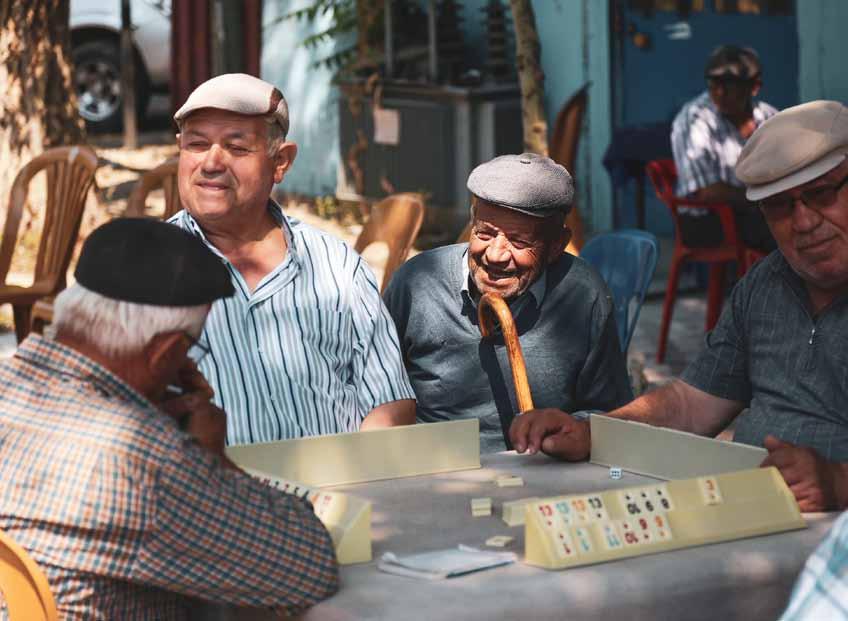
OLD BRAIN, YOUNG BRAIN
Memory decline is often linked to brain shrinkage. But how much brain size changes with age is highly variable.
On average, a person’s brain declines in volume and weight by about 5% per decade, beginning after age 40. Age-related brain shrinkage tends to affect the brain regions involved with learning and memory, like the frontal lobe and hippocampus. A reduced brain size is also less likely to maintain robust communication
58 23/09/22
Can You Keep Your Brain Young as You Age Health ?
among its different parts.
“These brain changes can make it more difficult to learn and process new information, recall names and words, and focus on completing tasks,” says Katsumi.
But super-agers’ brains shrink slower -- almost half as fast, according to some research. Why this occurs is not fully un derstood.
“There could be a genetic component that makes these peo ple’s brains be more resilient to natural shrinkage or shrink at a slower rate, but the difference also may be associated with lifestyle habits,” says Katsumi. “It’s also possible some people are born with exceptional memory, so they can still maintain higher-than-normal brain function even when exposed to natu ral decline.”
LIVING THE LIFE
So the question becomes, can you make yourself a super-ag er? While you can’t do anything about your genes, it may be possible to slow cognitive decline -- or maybe even improve cognitive function -- by following the lifestyle of super-agers. Many super-agers embrace habits that research has linked with healthier brains, including better memory and a lower risk for dementia. For example:
Be more social. Super-agers tend to have large social groups. Studies have shown that regular social engagement is a great brain booster. The opposite is also true. Social isolation is linked to lower volumes of gray matter in brain regions related to cognition, according to research published online June 8, 2022, by Neurology.
One way to increase social activity is to join a group. Men often find it most natural to bond with others over a shared activity or interest, so consider a walking group, golf or bowl ing league, card or chess club, or men’s club at a senior com munity center.

If you already have a small circle of friends but have trouble getting together regularly, take the initiative and schedule a meeting time. Men respond well to routine, so try setting up a regular gathering for coffee or lunch at the same place, ideally a setting designed for conversation and discussion.
Challenge yourself. Studies have linked learning with better memory. “Anything that can stimulate the mind and engage you to learn new information helps,” says Katsumi.
Focus on topics that interest you. For instance, study a lan guage for an upcoming overseas trip. A study published May 15, 2019, in Frontiers in Neuroscience found that adults ages 59 to 79 who studied a second language for just four months (16 two-hour sessions) improved the neural connectivity in the brain regions responsible for attention, working memory, and language processing. Other examples include signing up for
an online class, learning to play an instrument, volunteering for a favorite cause, or mentoring a youth. Even playing video games may improve memory in older adults, according to a 2020 study in Behavioural Brain Research.
Eat more “superfoods.” So-called superfoods are high in an tioxidants, which a growing body of research has shown help reduce inflammation and protect cells from disease-causing damage. But scientists also have suggested that other nutrients or compounds -- like polyphenols, omega-3 fatty acids, and specific vitamins and minerals -- also play a role.
It’s no coincidence that many superfoods are staples in con firmed brain-healthy diets like the MIND, DASH, and Medi terranean diets. It’s not certain which of these foods or what amounts are ideal, so the consensus is to focus on eating “su perplates” -- meals containing a variety of superfoods. Com mon choices include the following:
- berries
- whole grains (oatmeal, quinoa, barley)
- fatty fish (salmon, mackerel, trout)
- nuts (walnuts, almonds, pecans) - olive oil
- cruciferous vegetables (broccoli, brussels sprouts, cauli flower)
- avocados - green tea.
Be more active. Super-agers are quite active. Research has suggested that exercise can help maintain and possibly im prove cognitive function, even if you begin later in life. Aero bic exercise, strength training, and even yoga are all connected to better memory among older adults.
Guidelines suggest 150 minutes of weekly moderate-intensity exercise. But consistency is key. “The more active you are on a regular basis, the greater the brain benefits,” says Katsumi. Do ing a variety of activities can help you stay motivated. Choose several you enjoy and make them part of your lifestyle.
This article was originally published by Harvard Men’s Health Watch.
Many super-agers embrace habits that research has linked with healthier brains, including better memory and a lower risk for dementia.
Credit:
59 23/09/22
(TNS)
ook Reviews
“Boundless: The Rise, Fall, and Escape of Carlos Ghosn”
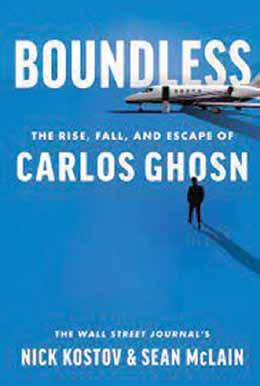
The Tragic Story of a Successful Executive
By Mohammad Ali Salih – Washington
A recent new book about Carlos Ghosn (age 68) who was born in Brazil, raised in Lebanon, knows four languages, has four citizenships, managed five international powerful car companies and wrote four books (many books were written about him) described him as “a hero of a Shakespearian novel.”
According to co-author Sean McLain: “A lot of people compare it to a Greek tragedy, but I would say it’s more like a Shakespearean tragedy, of a highly talented man with everything going for him, ending with a highly visible, slowmotion train wreck that everybody can see coming but still feels bad when it happens.”
Mclain, and co-author Nick Kostov have been specialized for decades in writing about the international car industry. McLain wrote: “I have been the automotive reporter in Japan for the past six years, so I was already covering Toyota, Honda, Nissan, Mazda, Subaru, and all the others when the story broke. It started out as a joint reporting project (with Kostov) because the story was based in France and Japan.”
What did Ghosn do?
As chairman of Japanese Nissan, he took 50$ million from a business associate and used that money for a private side enterprise, and the Japanese arrested him for what they said was paying a bribe.
Why did he do that?
Ghosn strongly denied the allegations, saying the money documents were based on an internal benchmark he kept that came from job offers he received from other firms. He said, “I am wrongly accused and unfairly detained.” He added: “I understand the suspicion, but documents reviewed by internal and external lawyers, showed that I had no intent to violate the law.»
Was that moral?
The book wrote: “He was a rich man who thought he should be richer, who, when he got caught with his hand in the cookie jar, decided to run away, as opposed to fighting it in court.”
The book added: “But when you dig into it, you do see a man who is incredibly, almost unbelievably, talented in a lot of ways and whose heart was in the right place on most things in his life.”
In 2019, he escaped from Japan while waiting for his day in court. With help from an American private- security family, he
60 23/09/22
B Book Cover
Carlos Ghosn

was hidden in a musical instrument box that was shipped to Lebanon. Interpol issued a notice to Lebanon seeking his arrest. But he is a citizen of Lebanon, and Lebanon has no extradition treaty with Japan.
This is a description from the book about how he was smuggled from Japan to Lebanon:
“Carlos Ghosn contemplated the box in front of him. Freedom. It was a large black wooden crate with steel reinforcements on the edges, the sort of case a band would use to transport large speakers or instruments … Ghosn was listening to instructions from Michael Taylor, the former Green Beret he had hired to help maneuver the getaway … Taylor was explaining, step by step, what the auto titan would need to do: Climb into the crate, and stay still. Let the lid be lowered. Once secured, the trunk— and he—would be in motion. Inside his box, he would be loaded onto a private jet with the rest of the luggage … Ghosn was well versed in the private-jet lifestyle. He had flown everywhere on his Gulfstream as chief executive of two carmakers, Renault and Nissan. He was accustomed to flying high above the clouds, lounging on a plush leather seat. This would be a new experience.”
During his hay days, he had an annual salary of 18$ million, with many perks. By French or Japanese standards, that was a
lot of money. But in America, Alan Mulally at Ford made 26$ million in 2010. David Zaslav at Discovery Communications made 42$ million. Larry Ellison at Oracle made 70$ million.
As the book shows, “his envy of U.S.-style paychecks is what brought him down.”
“Always full of himself, Ghosn lost sight of what made him a great executive as the years went on,” the book said, describing extravagant parties, including one at France’s Versailles Palace; pleasing his glamorous second wife, a Lebanese American; and flocking with the media which made him an envy of top CEOs who would rather deal in the dark.
Therefore, “When his luck expired, he had few friends.”
For the first time in 2010, Japan forced corporate directors who made more than 1$ million a year to disclose their pay. Ghosn agreed to have his pay cut by 50 percent, to 9.6$ million.
But, according to the book, “The prospect of having to return nearly half his pay stung him” and he started looking for a trick, and that was what led to his fall. Most probably, he will end up in jail, as illustrated by the fate of those who helped him to escape from Japan: Michael and Peter Taylor, the American father-and-son security team who masterminded the getaway, were extradited to Japan and are in prison. And his assistant who participated in his tricks, John Kelly, returned from Japan to the United States and was found guilty of helping Ghosn hide his full salary.
Ghosn is still in Lebanon, which he cannot leave without fear of being arrested. He still writes books and talks to the media. But his problems are accumulating. In April, France issued an international warrant for his arrest for having helped funnel millions of dollars of Renault funds for his personal use, including the purchase of a 120foot yacht. That was when he was running the French Renault car company.
Ghosn said the timing of this warrant was «suspicious,” that even the Japanese didn’t charge him for that. But he seemed to prefer to stand in front of a French court instead of a Japanese one.
In an interview that was published in the book, Ghosn was asked if he had any regrets. He said he had one: rejecting an offer to be CEO of American General Motors -- which would have paid him many more million dollars than Japanese Nissan.
“Ghosn’s story can be compared to a Shakespearean tragedy of a highly talented man with everything going for him, ending with a highly visible, slow-motion train wreck” Kostov
61 23/09/22
Authors: Nick
and Sean McLain Publisher: Harper Business. Pages: 320 Price: $29.99 Hardcover, $15.99 Kindle
pinion
The Myths Behind the Abolition of Slavery
By Saif Al-Abri

“History tends to glorify and sanitize the past” – nothing demonstrates such a saying as much as slavery. For centuries European colonies have systematically pursued policies that exploited and enslaved people and their land. However, after centuries of rape, mutilation, whipping, shooting and the most horrific forms of subjugation, Europe was overtaken by some form of moral spirit that led to the abolition of enslaved people—or— some suggest that the development of free labor set aside such an inefficient form of labor. Both explanations for the abolition of slavery ignore the constant resistance from day one of enslaved people and deny any form of agency towards the enslaved. But rather see themselves as the cause for the abolition of slavery.
of total exports for some time-) was from the colonies.
Some explanations for the abolition of slavery ignore the constant resistance from day one of enslaved people and deny any form of agency towards the enslaved
The first hypothesis is clearly illogical, whereby it believes enlightenment added a moral dimension and created the seeds for an abolitionist discourse that turned the tide. It is quite the opposite, where enlightenment added a scientific dimension to racism. David Hume›s major enlightenment figure believed that Negroes are between Europeans and apes. Kant views human perfection as achieved only by being in the white race, and examples are many, from Voltaire to John Locke, that justify the domination of other races.
The second hypothesis, the Smithian view of slavery, clearly lacks the numbers to understand the magnitude of slavery›s role in the formation of capital accumulation, thus industrialization and modern capitalism. For instance, Guillaume Daudin›s studies conclude that, for a period of the 18th-century, the slave trade was more lucrative than domestic investment (%30 15 returns). Joseph Inikori showcased that slave ventures where Davenport acted as managing director (British slave trader) yielded an average profit of %50. Slave trade contributed %8 of the total and %39 of commercial investments. Most of the cotton imported by Great Britain›s cotton textile industry to export (-contributed %40 30
Furthermore, the control and subjugation of enslaved people allowed colonizers to develop efficient means of industrialist discipline. Such complete domination allowed them to “experiment, gather data and control efficiency and productivity.” There›s a reason Marx labelled it as a calculated and calculating system. It helped develop the managerial form of labor subordination, also marked as “free” labor. It seems that there’s a deep relation between slavery, imperialism and modern capitalism. The previous paragraphs clearly show that neither enlightened discourse nor the inferiority of slavery as a form of labor was the cause for the abolition. Sébastien Rioux and many other writers pointed out that constant resistance played a significant role in abandoning the slave system. If one looks at slavery, it was filled with revolts. Sébastien Rioux highlights three forms of resistance: quotidian-related struggles, running away for a while (petit marronage) and rebellion. Takeovers were also widely spread. Rioux mentions, for instance, the 1763 revolution in Dutch Berbice, in St. Jan in the Danish West Indies in 1733, and in the French colony of Grenada in 1795, each of which required military action which was capital intensive. In addition, there were successful cases like the Haitian revolution and the Dutch slave colony of Sint Eustatius. As João José Reis accurately concluded, “By the time slavery was outlawed in 1888, the demise of slavery was largely a fait accompli.”
Of course, it is pretty hard to conclude from such a brief outline of revolts the magnitude of such a factor. However, the bias and inaccuracies of the first two hypotheses regarding the question of slavery, imperialism and modern capitalism are pretty straightforward. Although often ignored, enslaved people were humans, and I can›t imagine any human who would just submit to the will and brutal violence of colonialists.
62 23/09/22
o
.

































